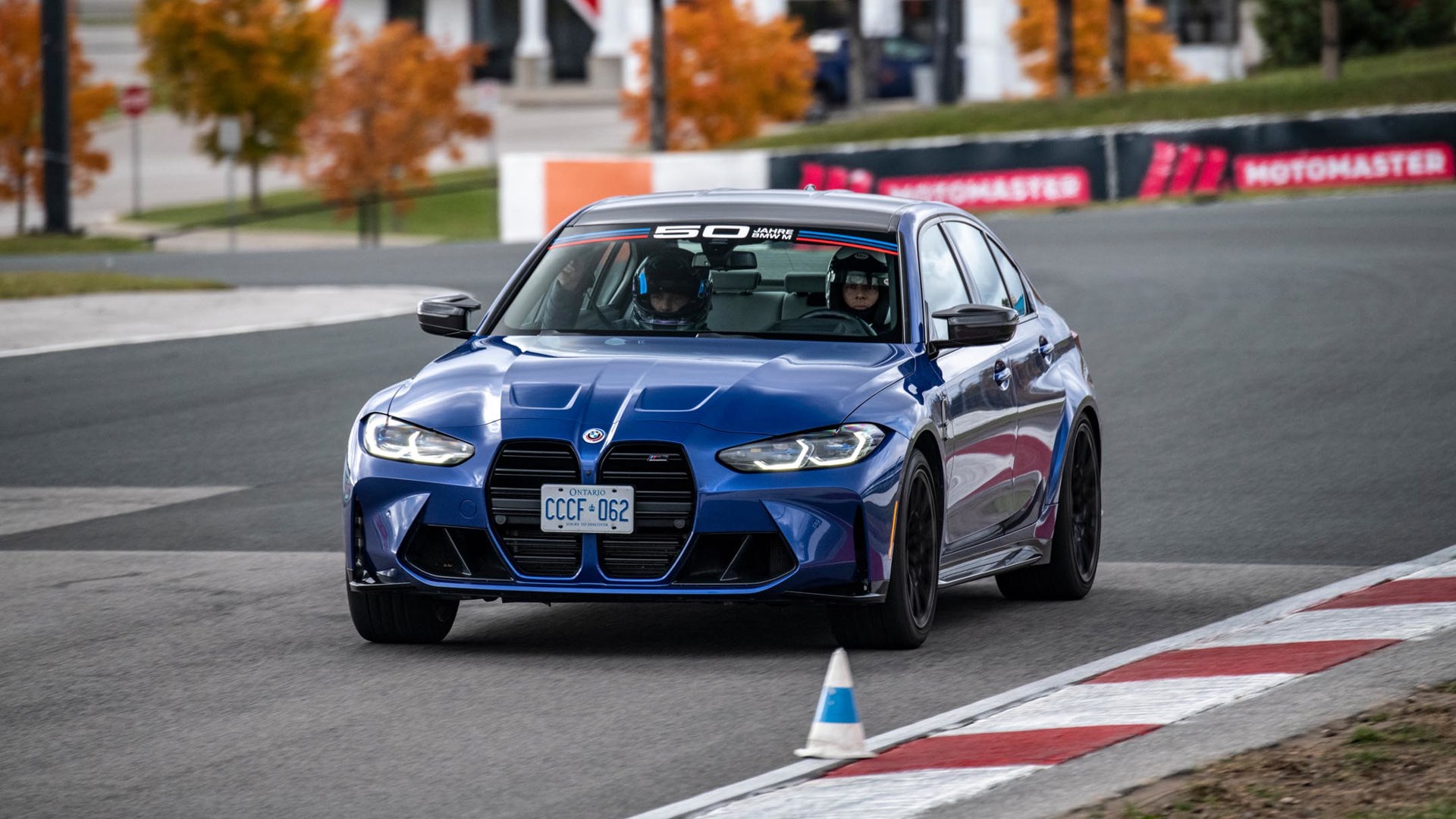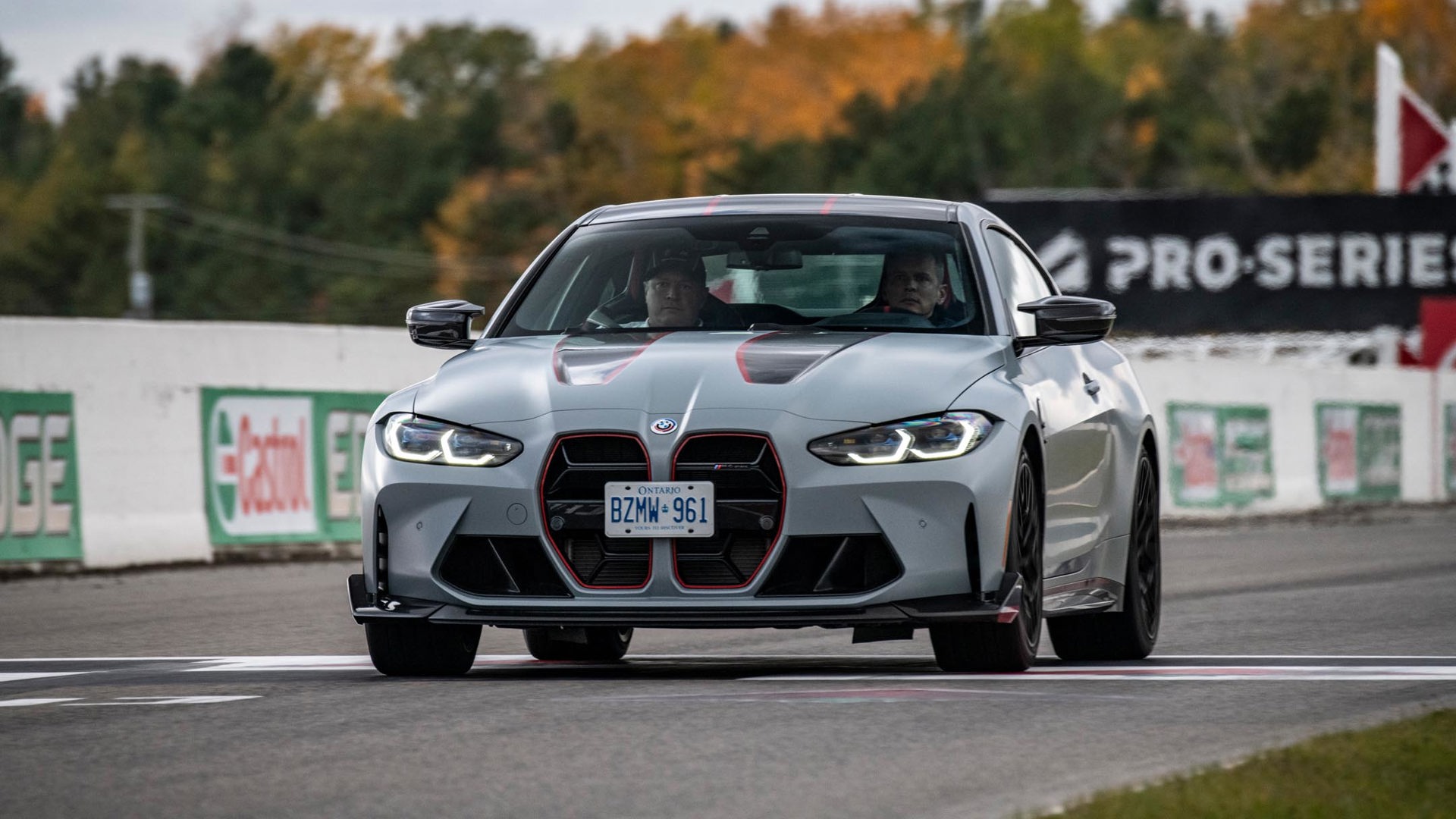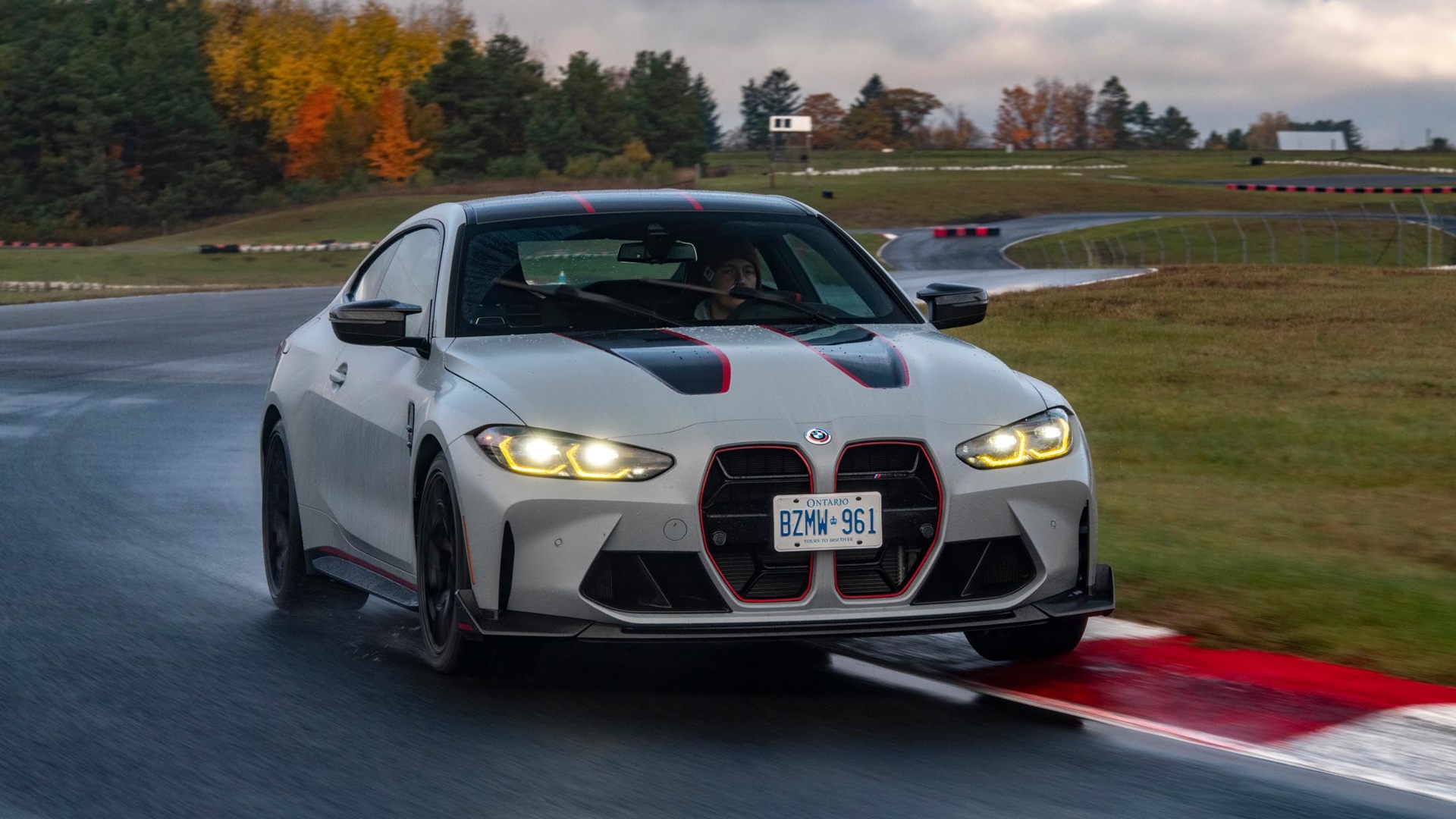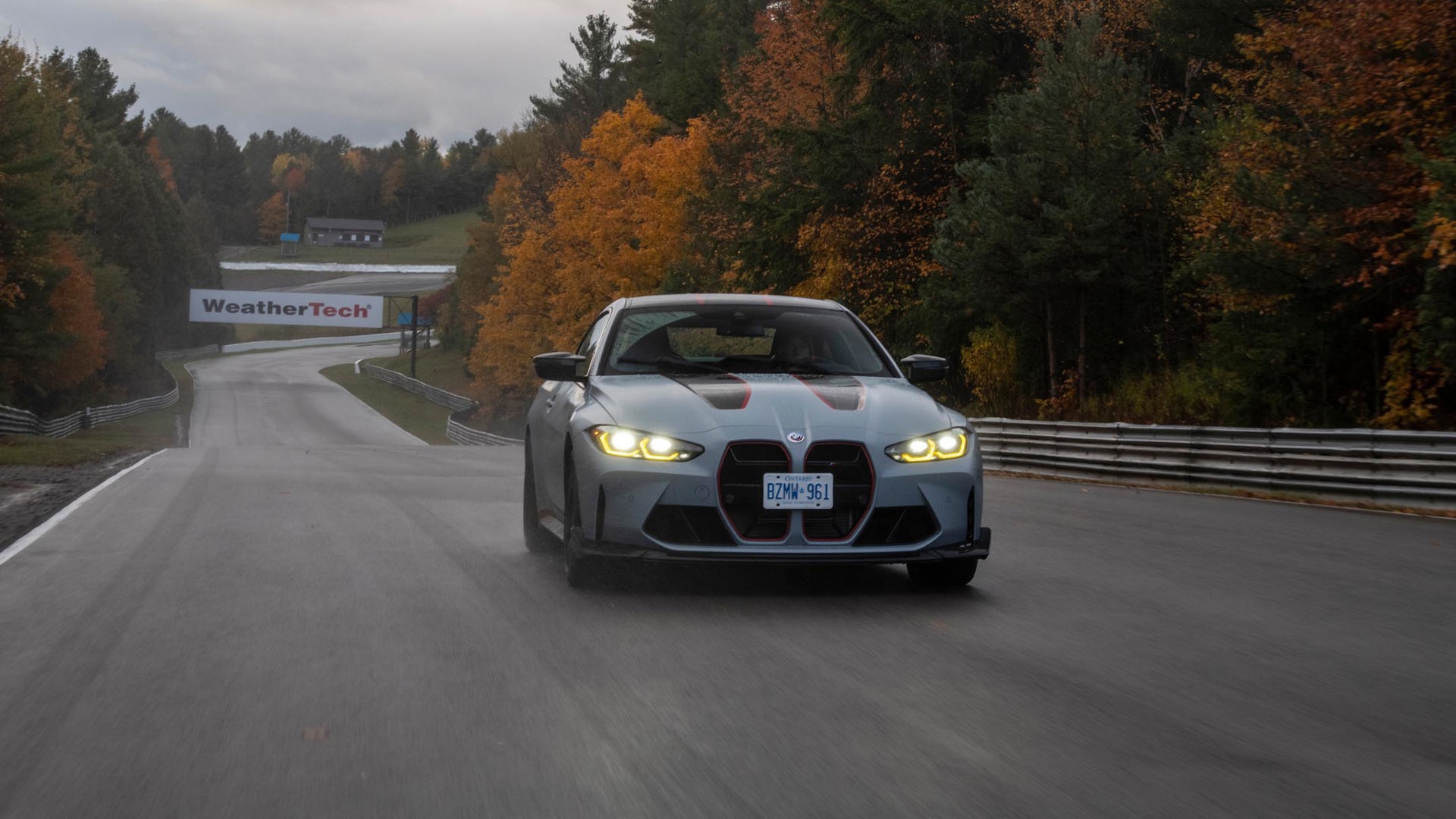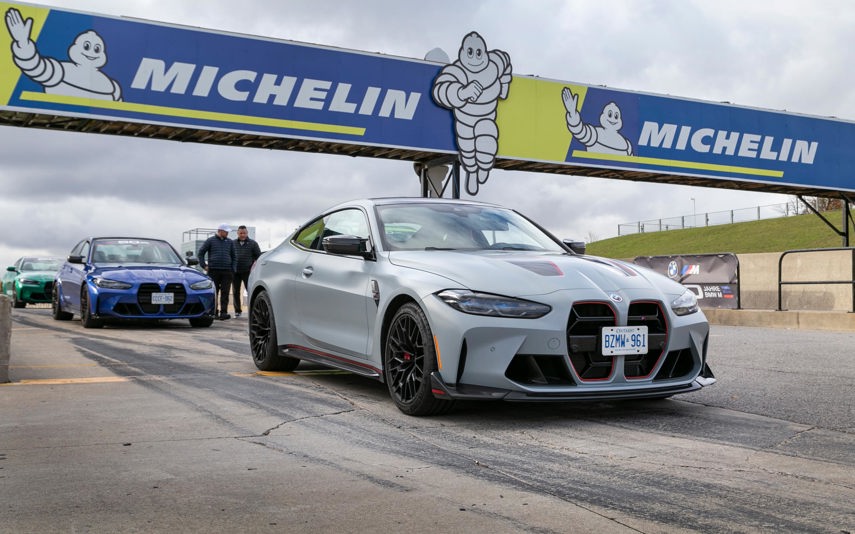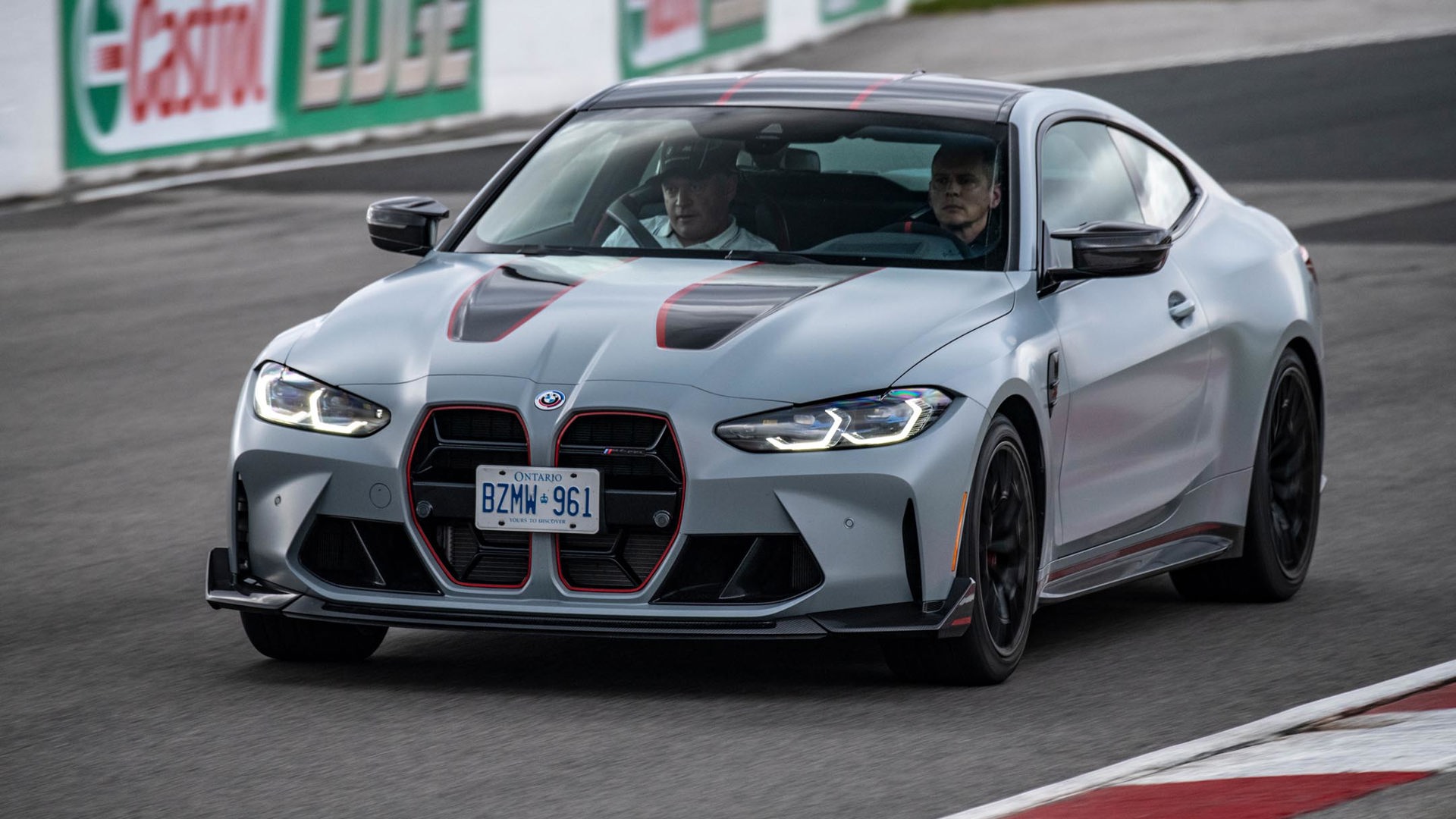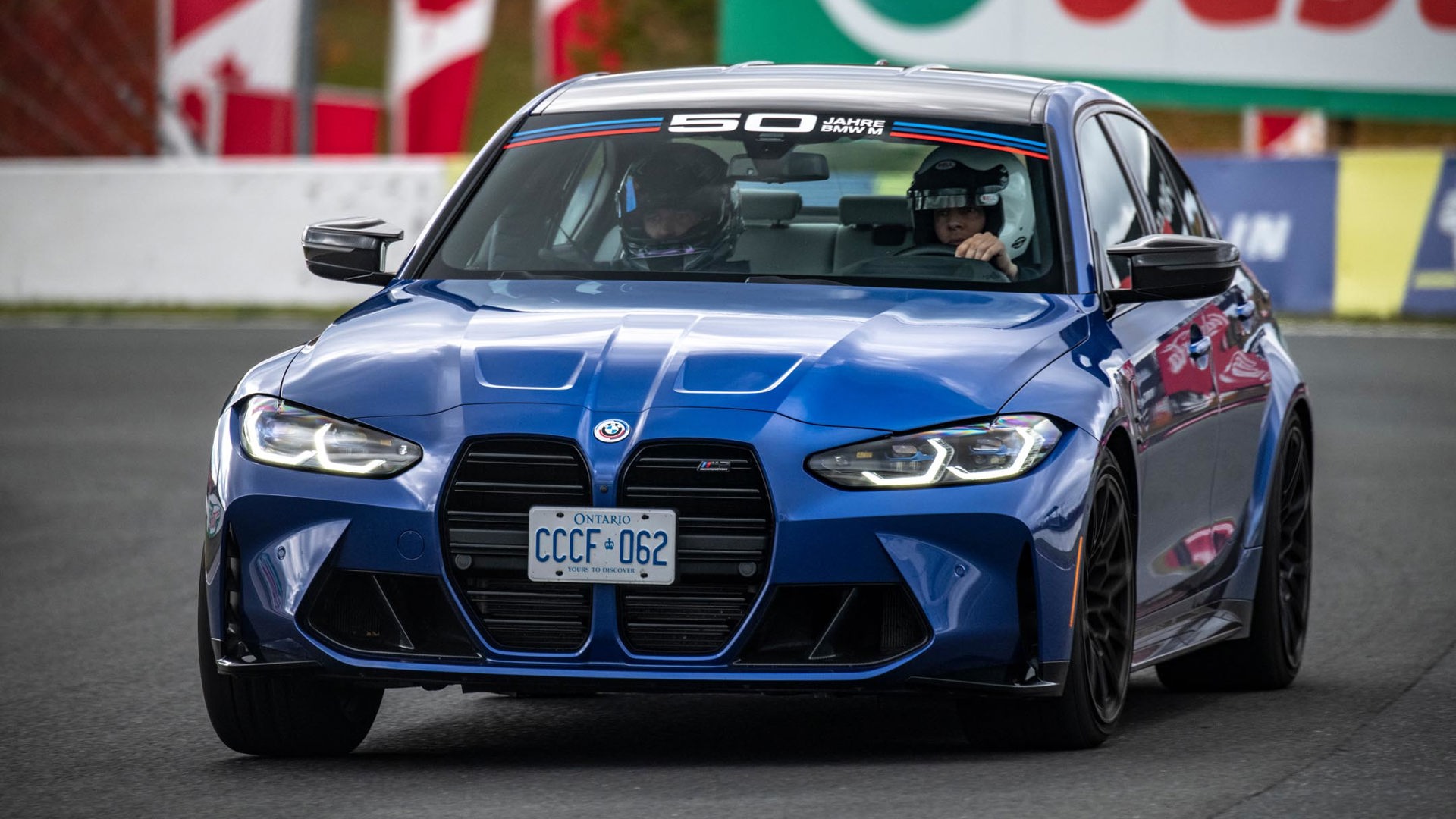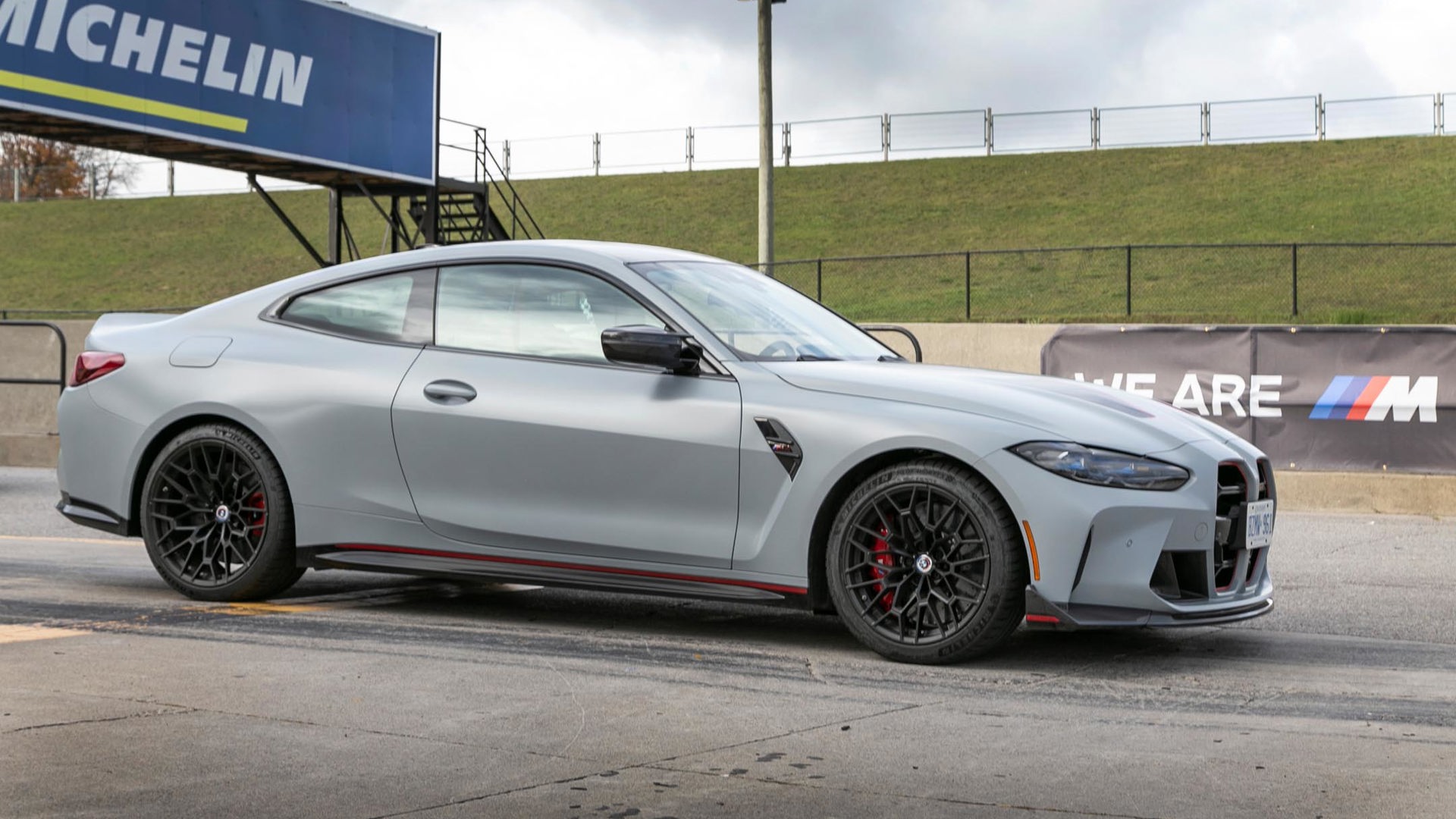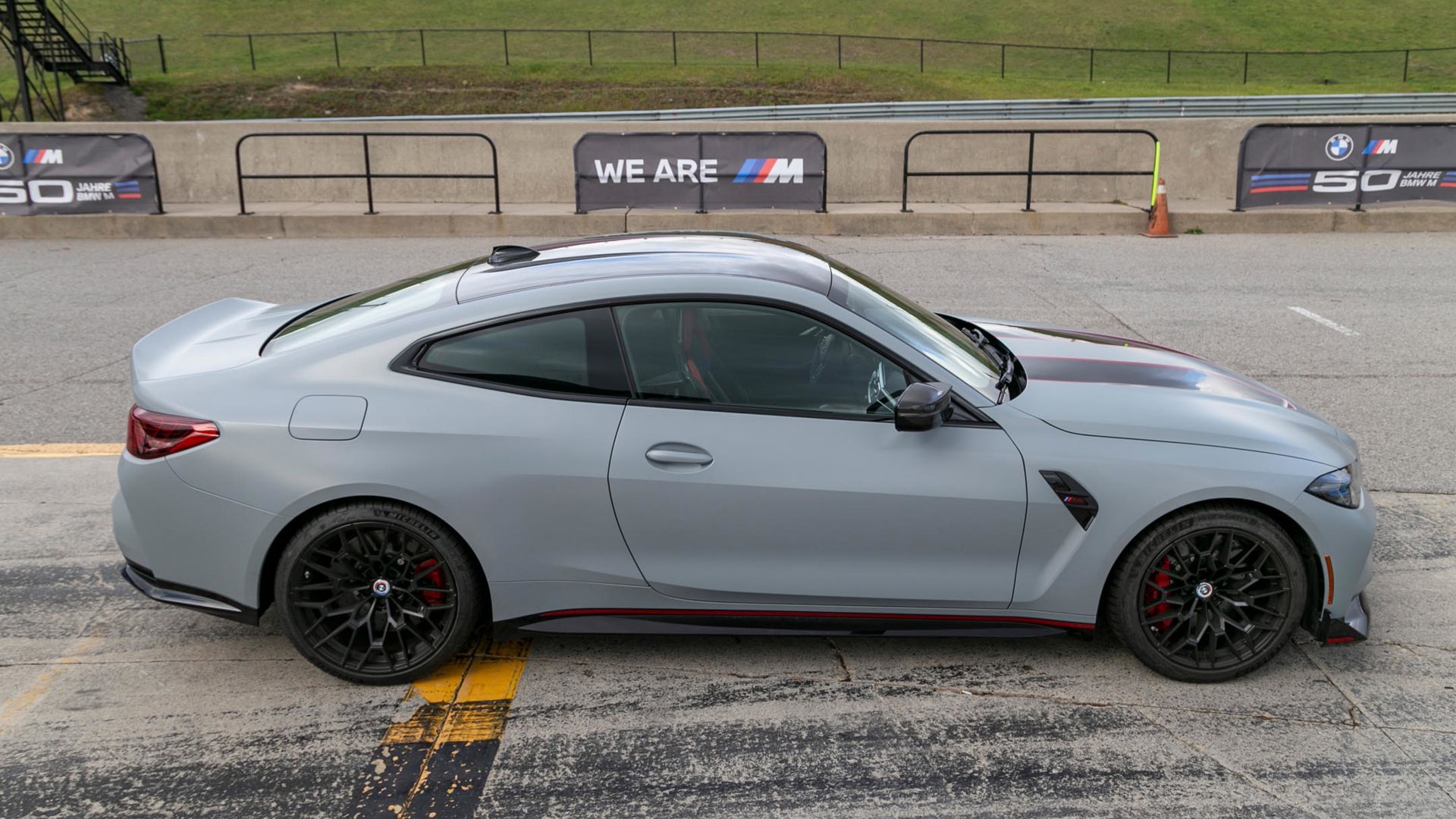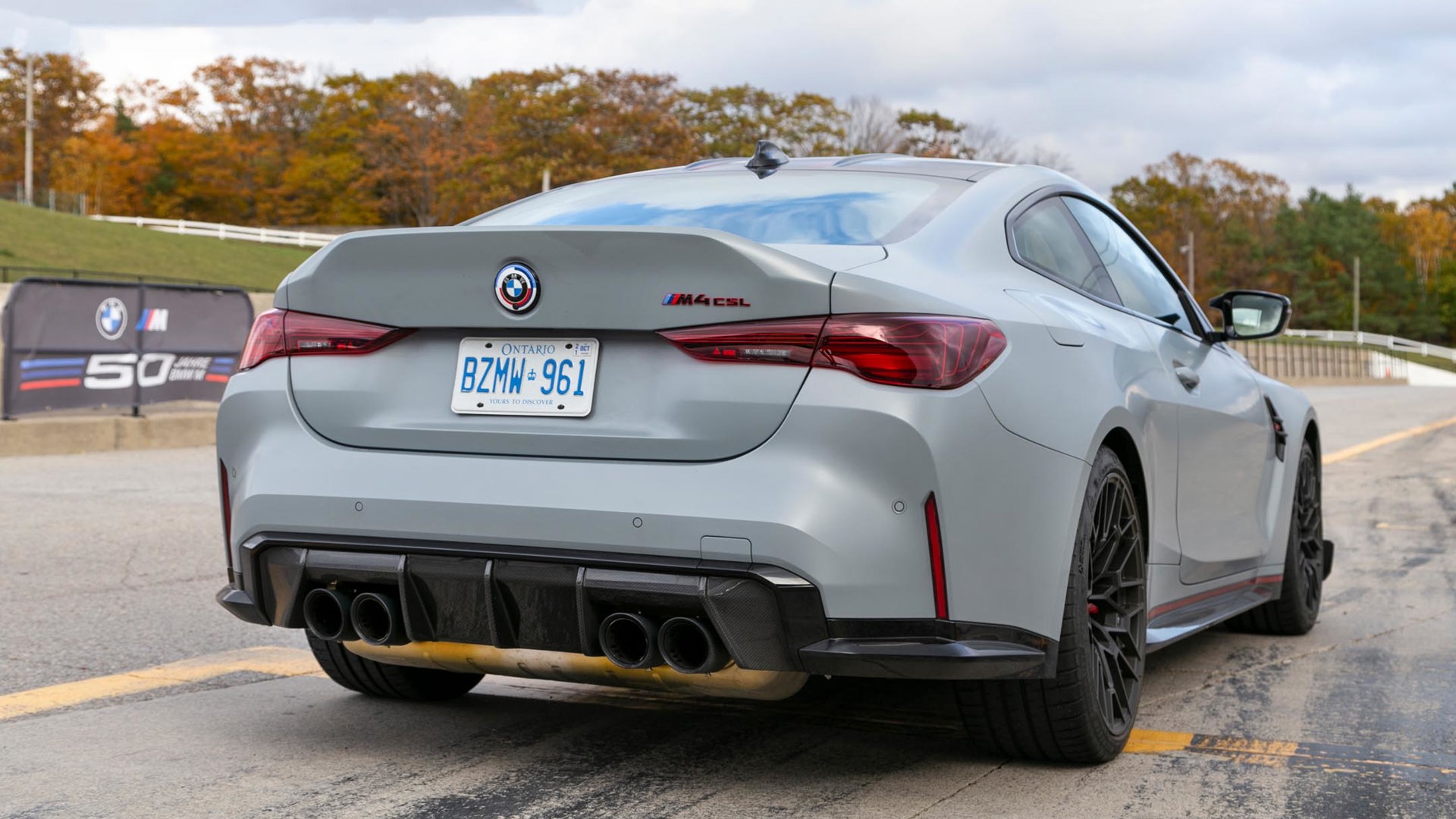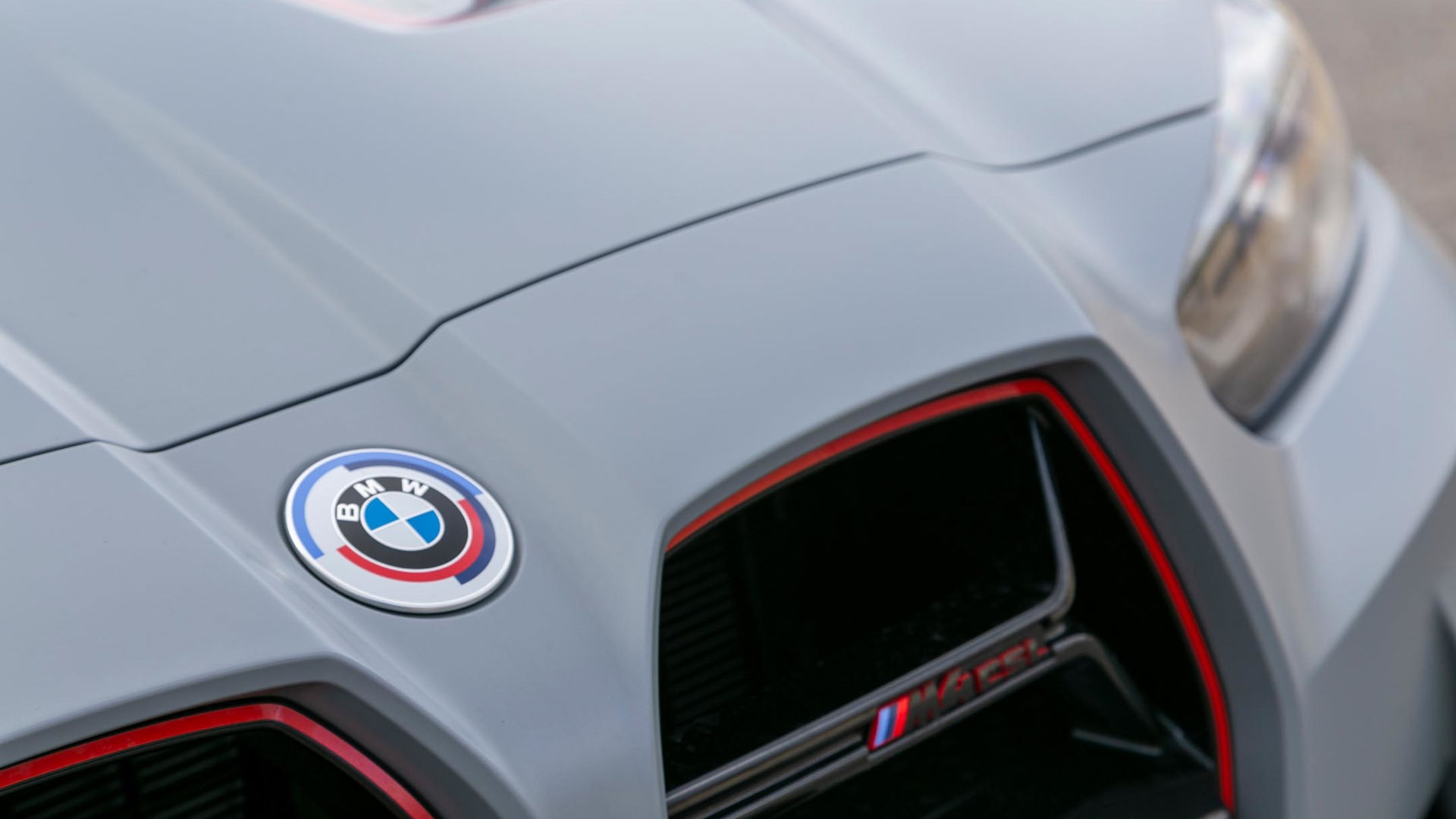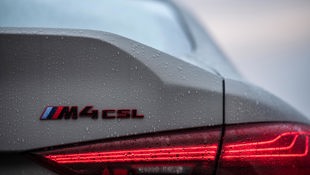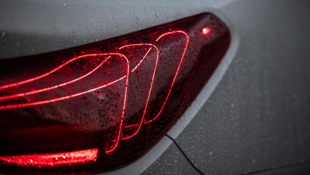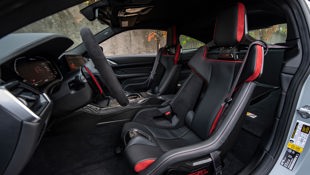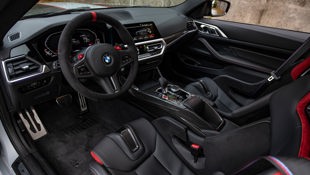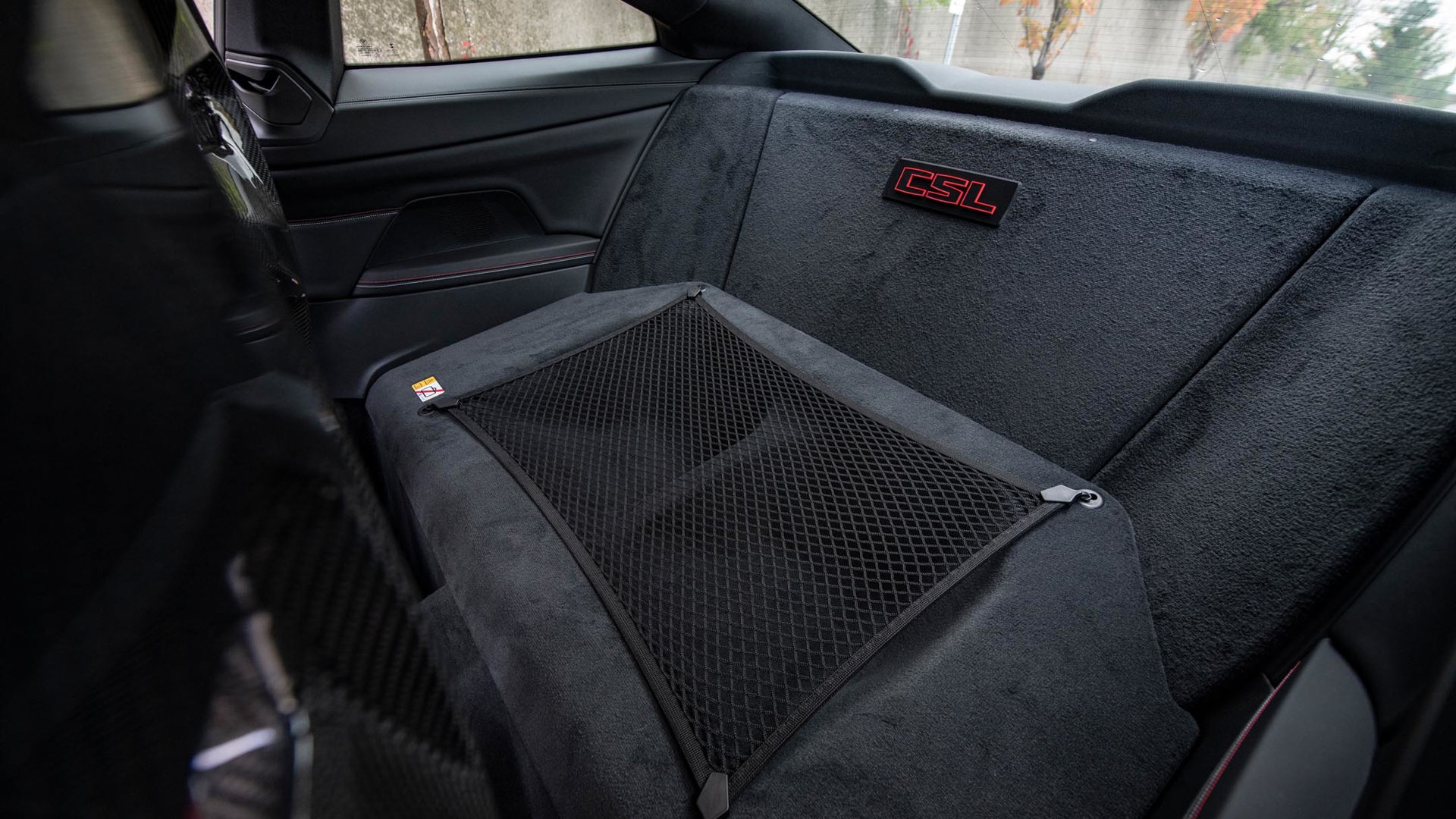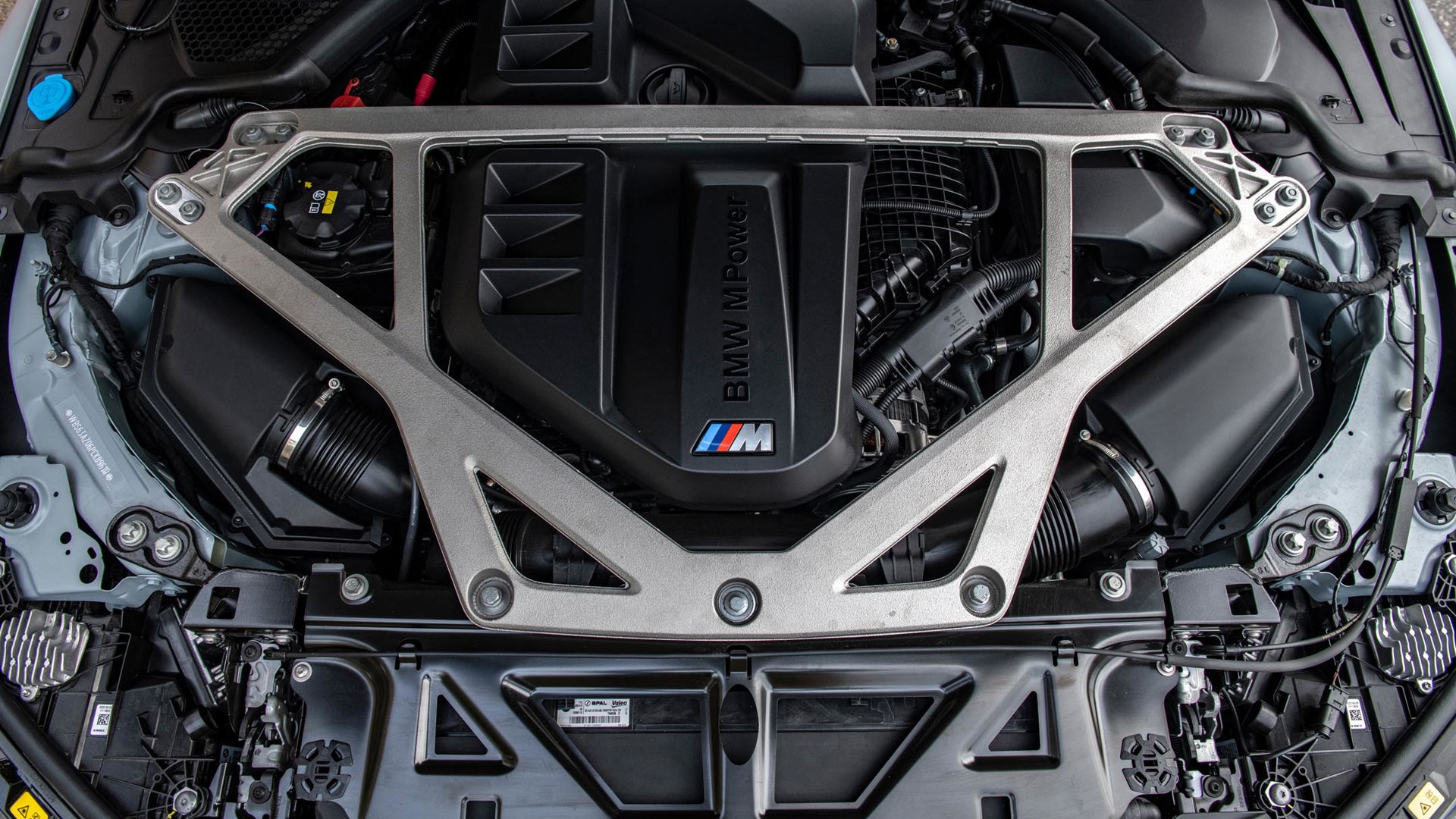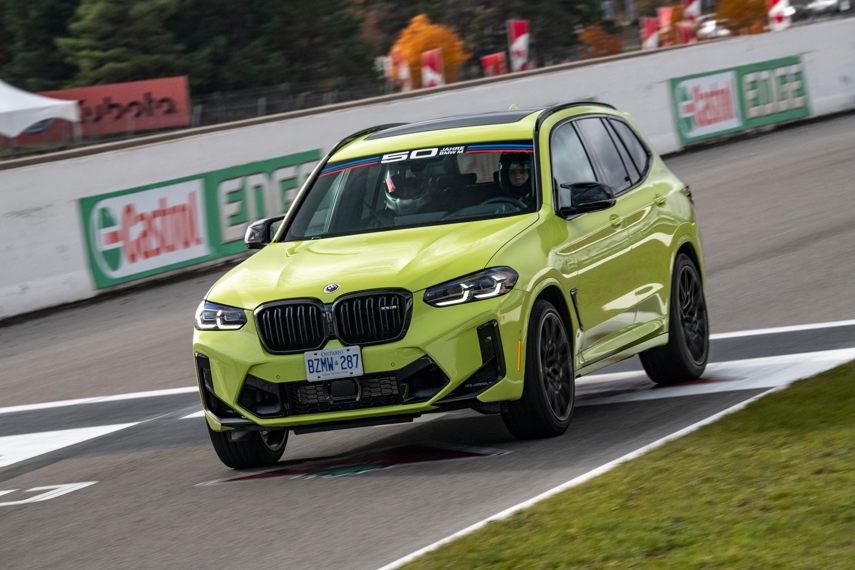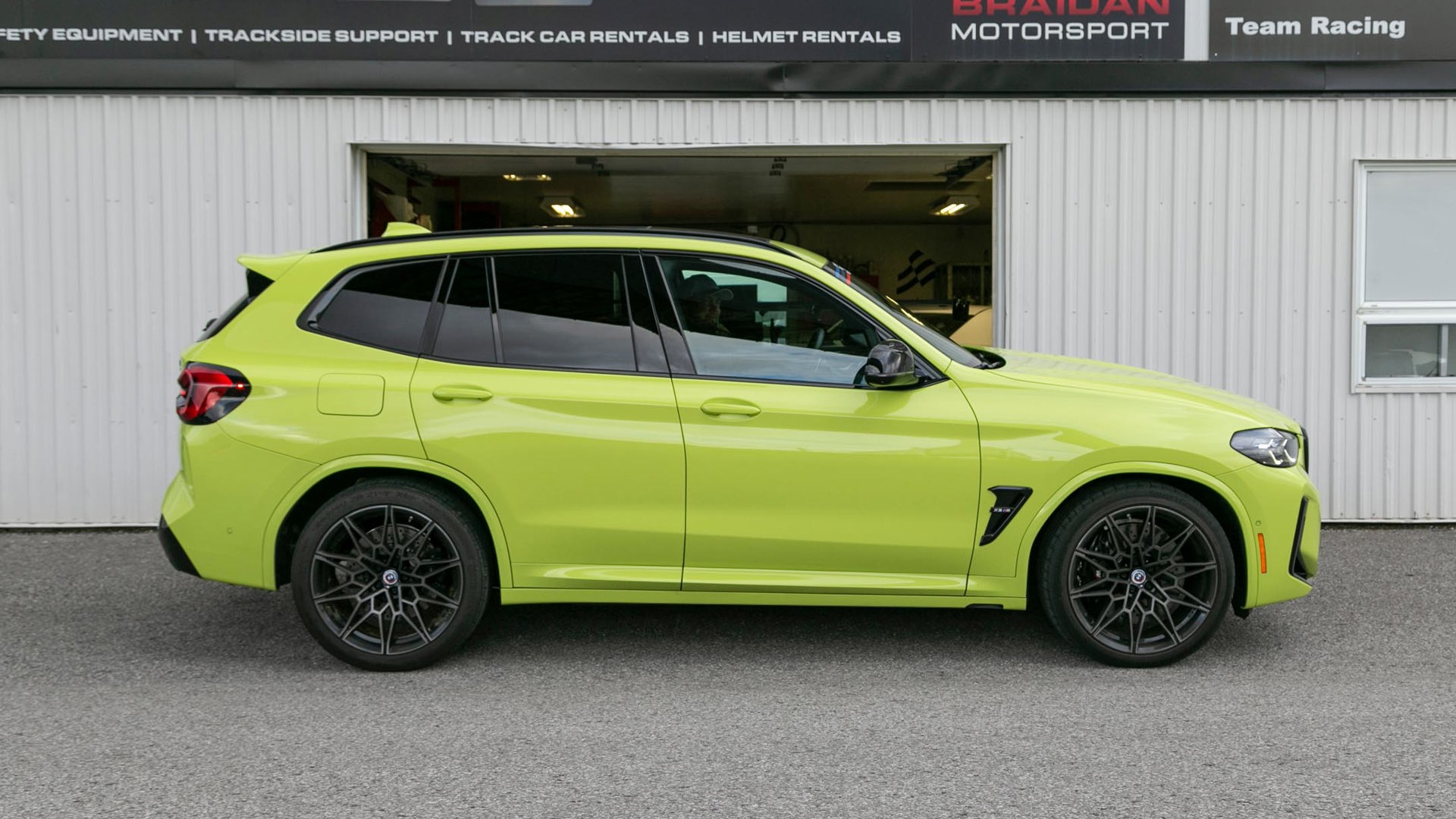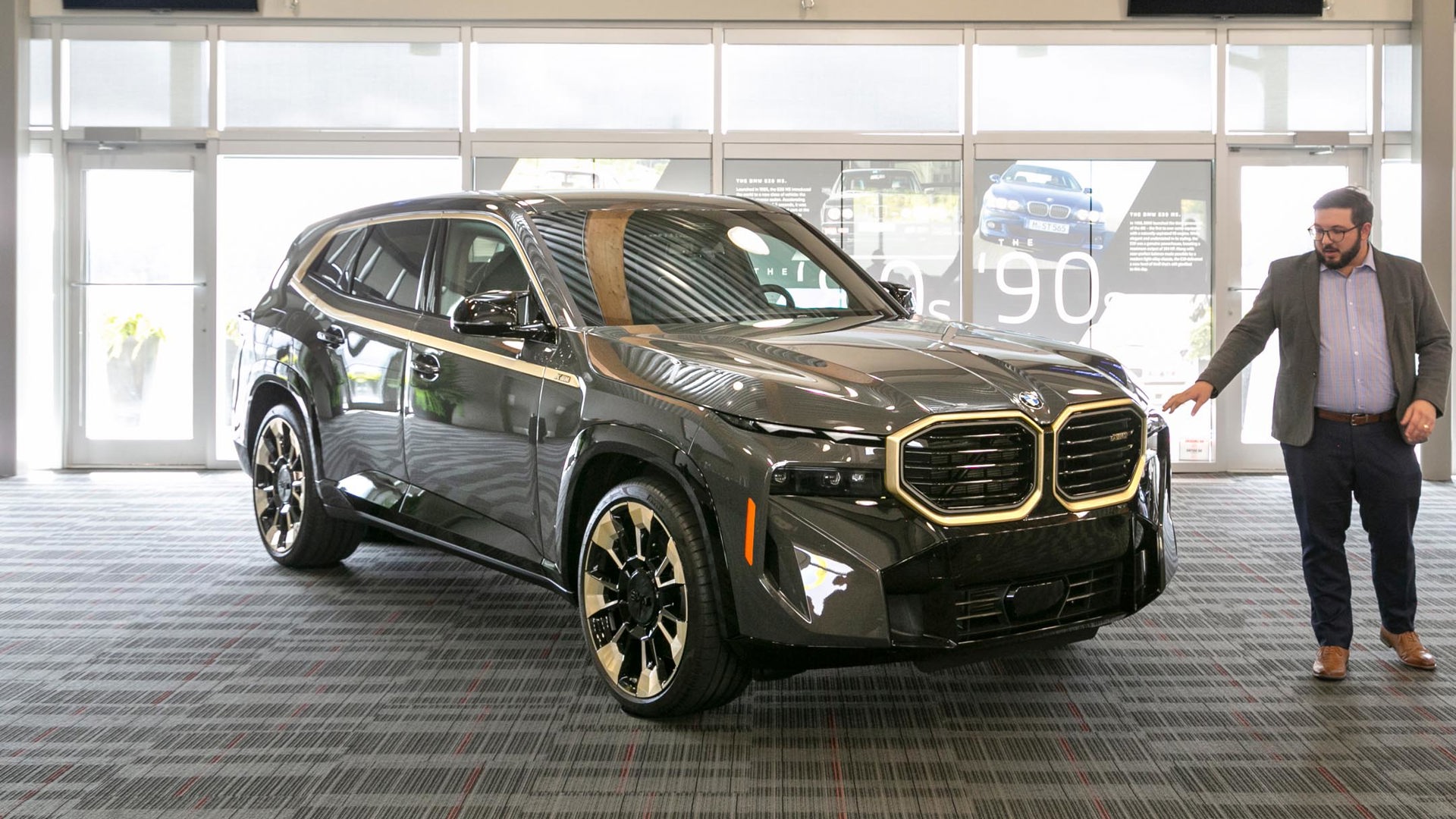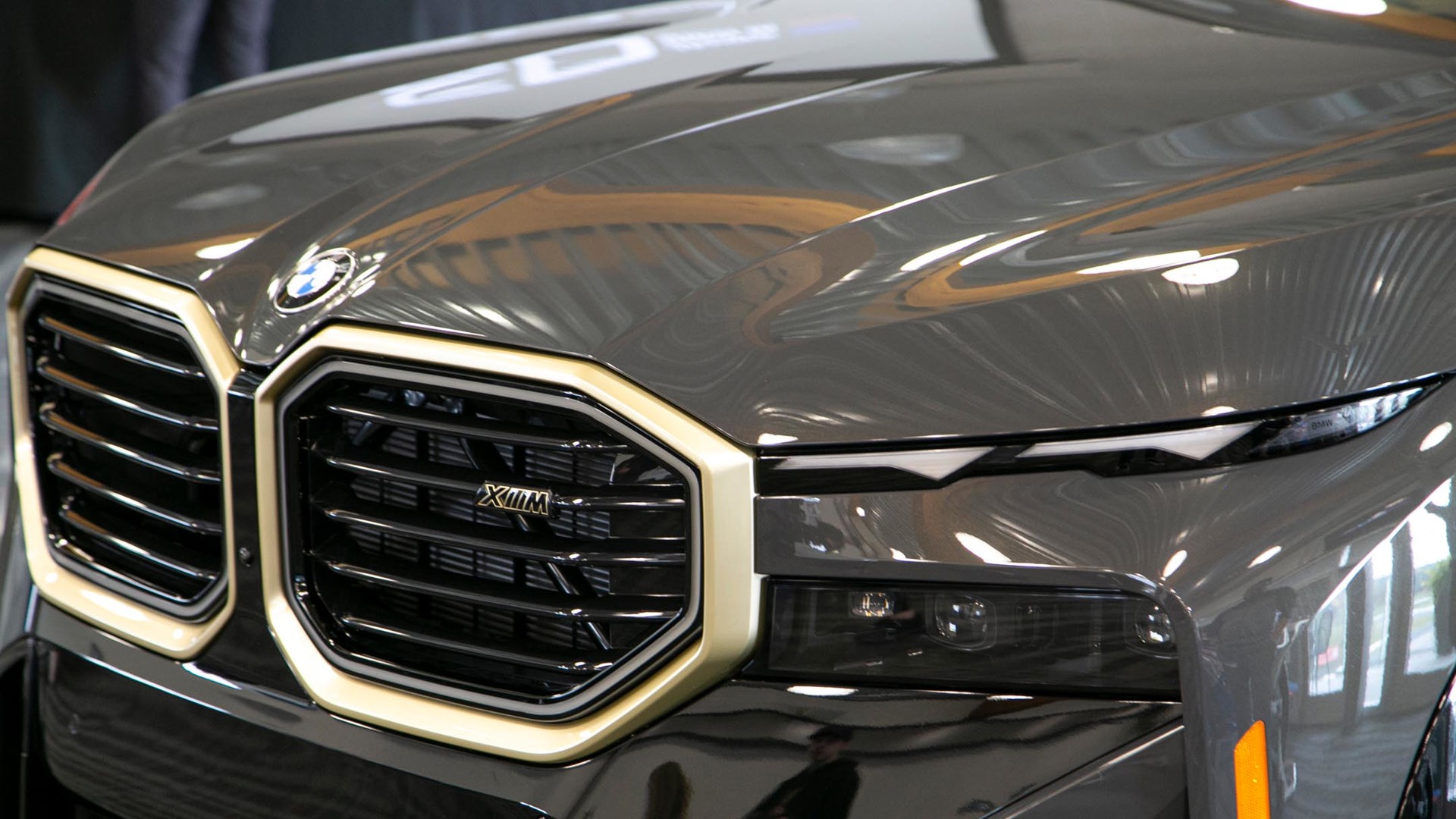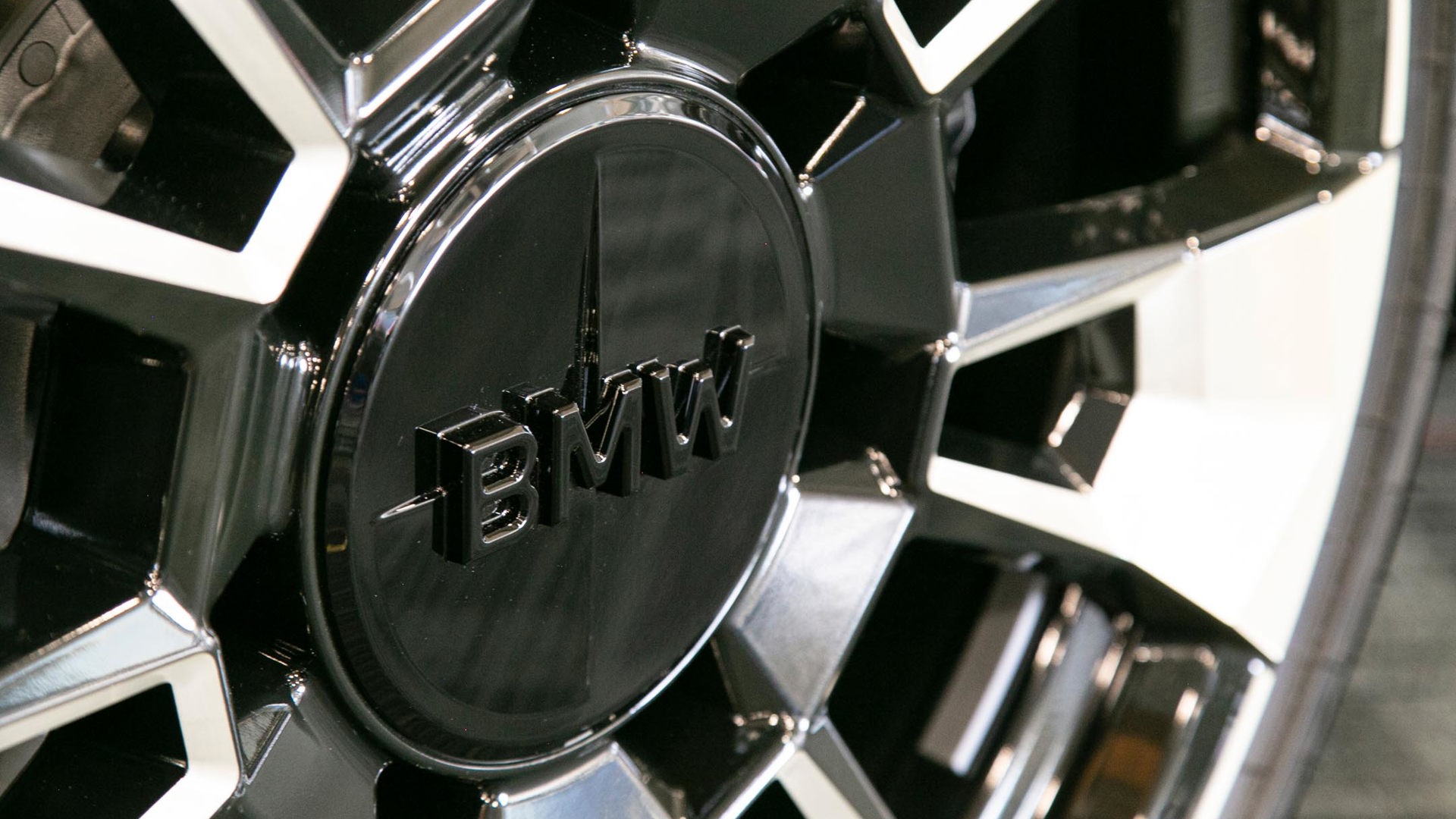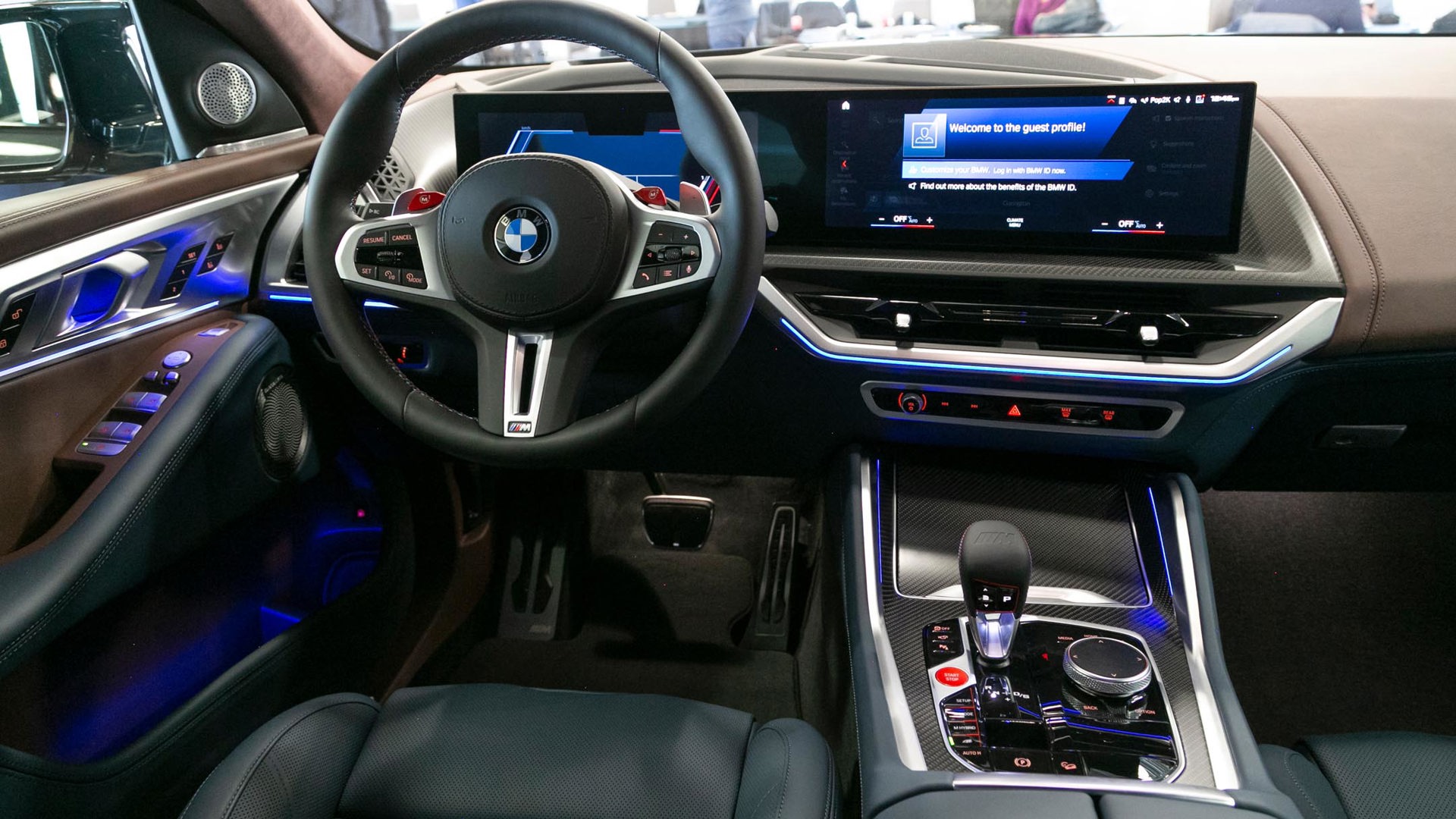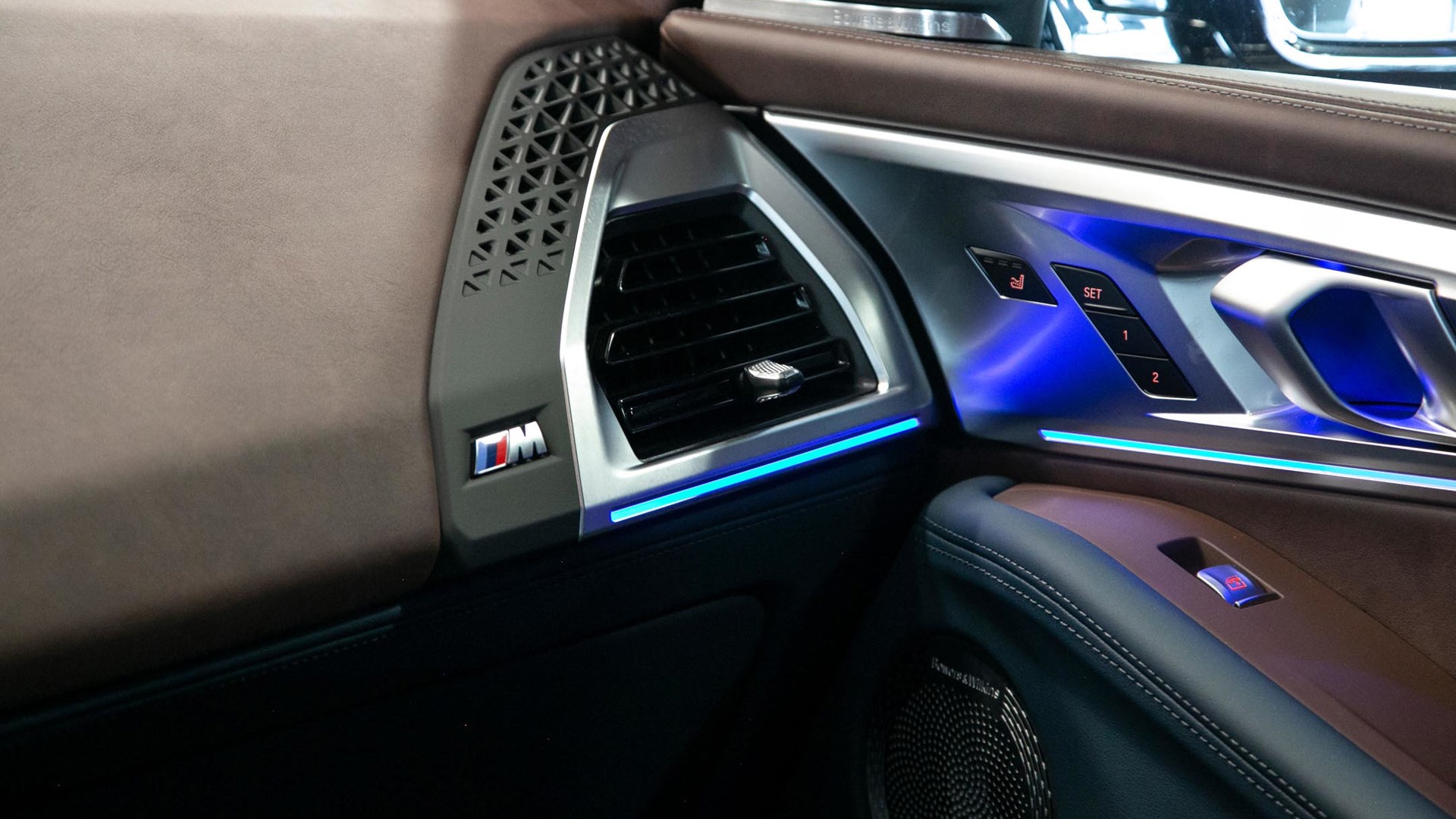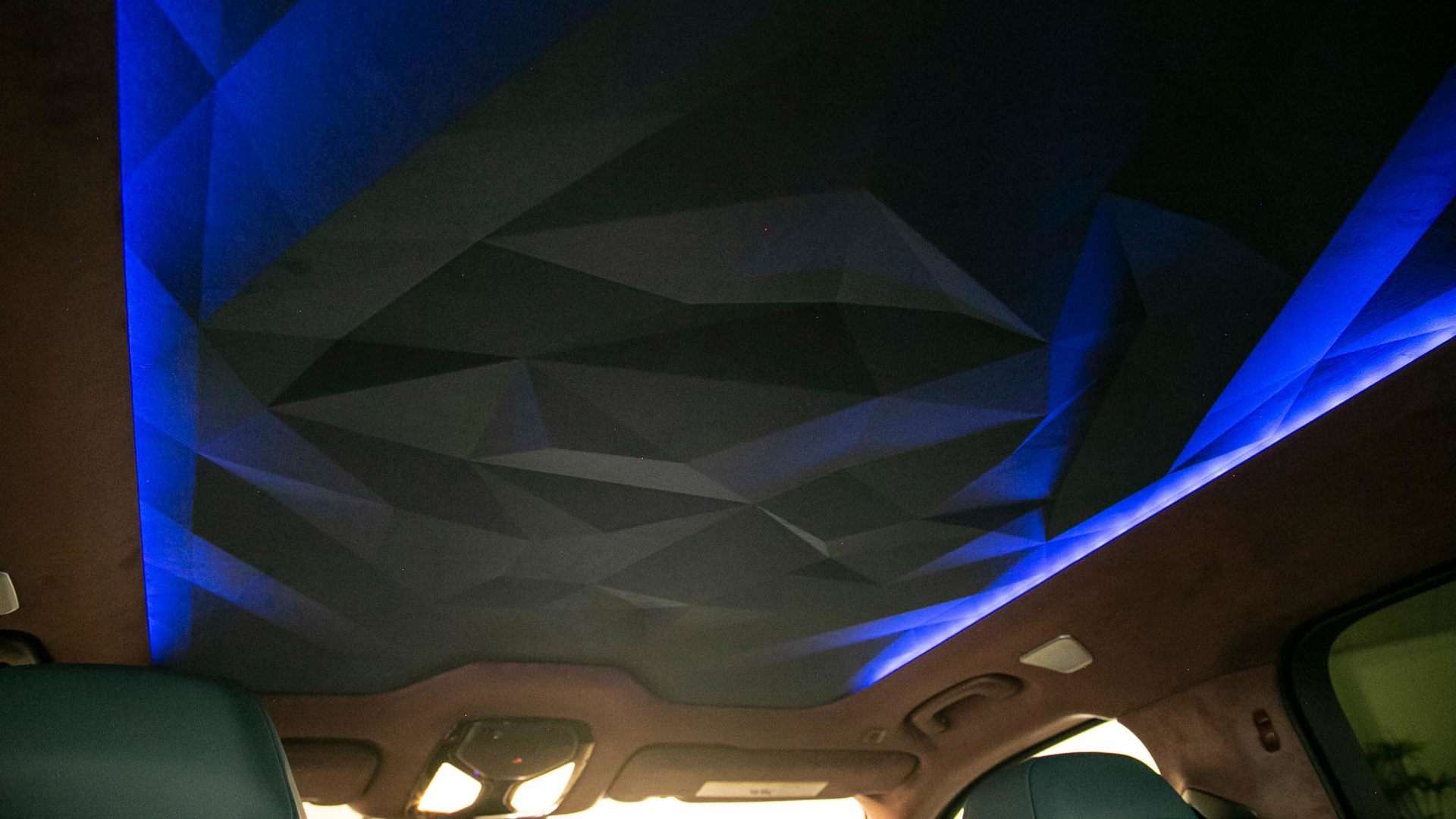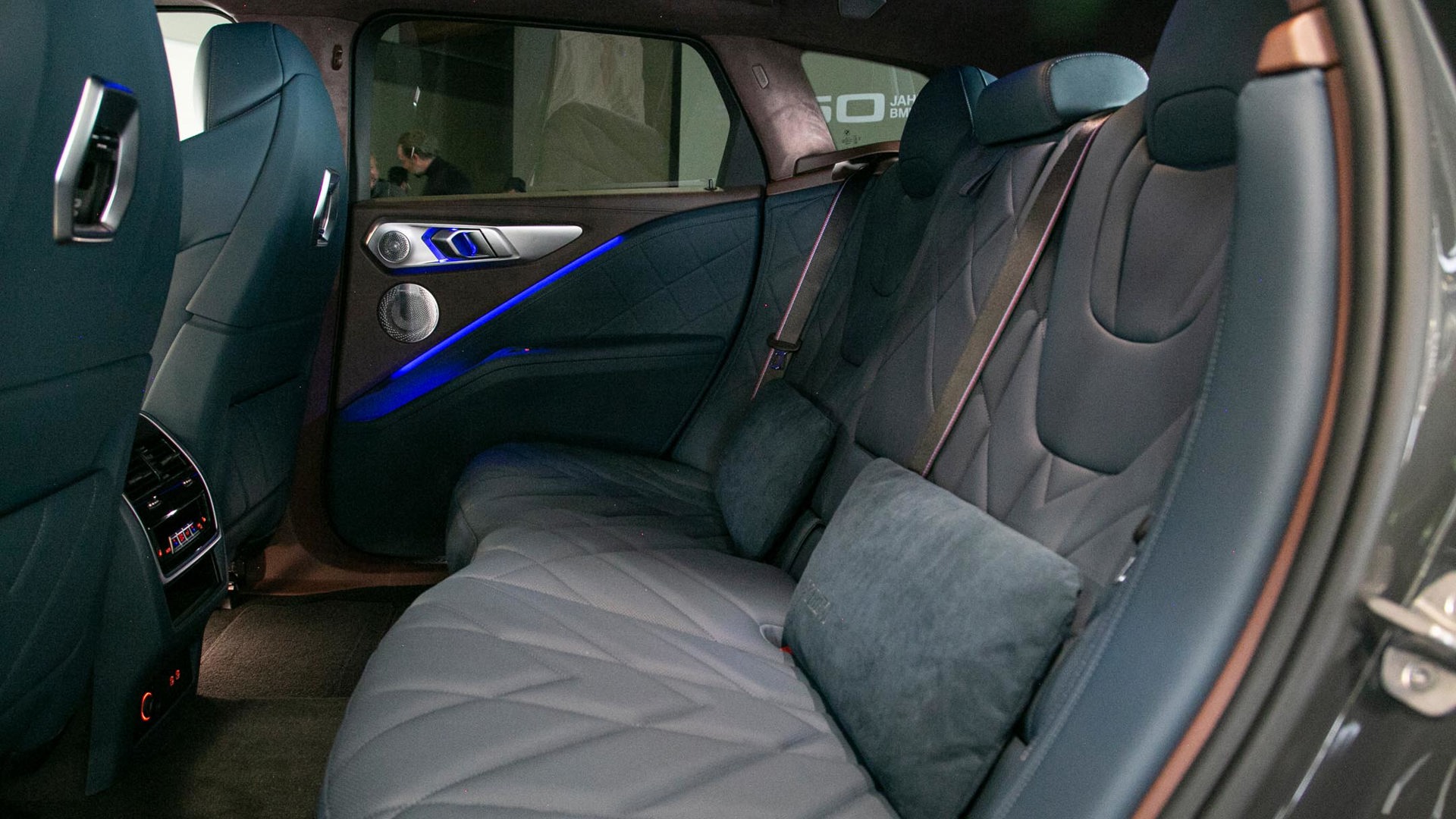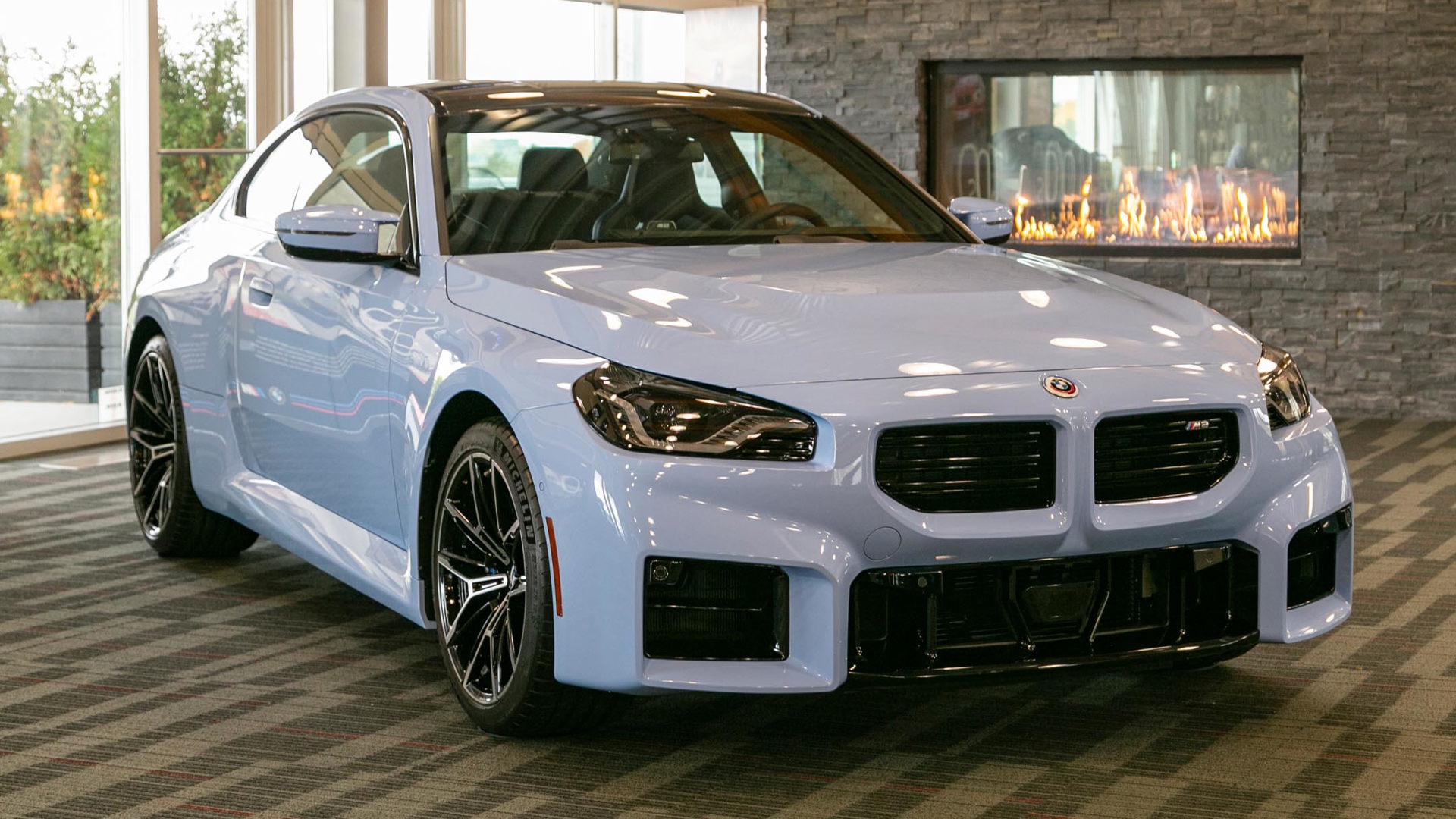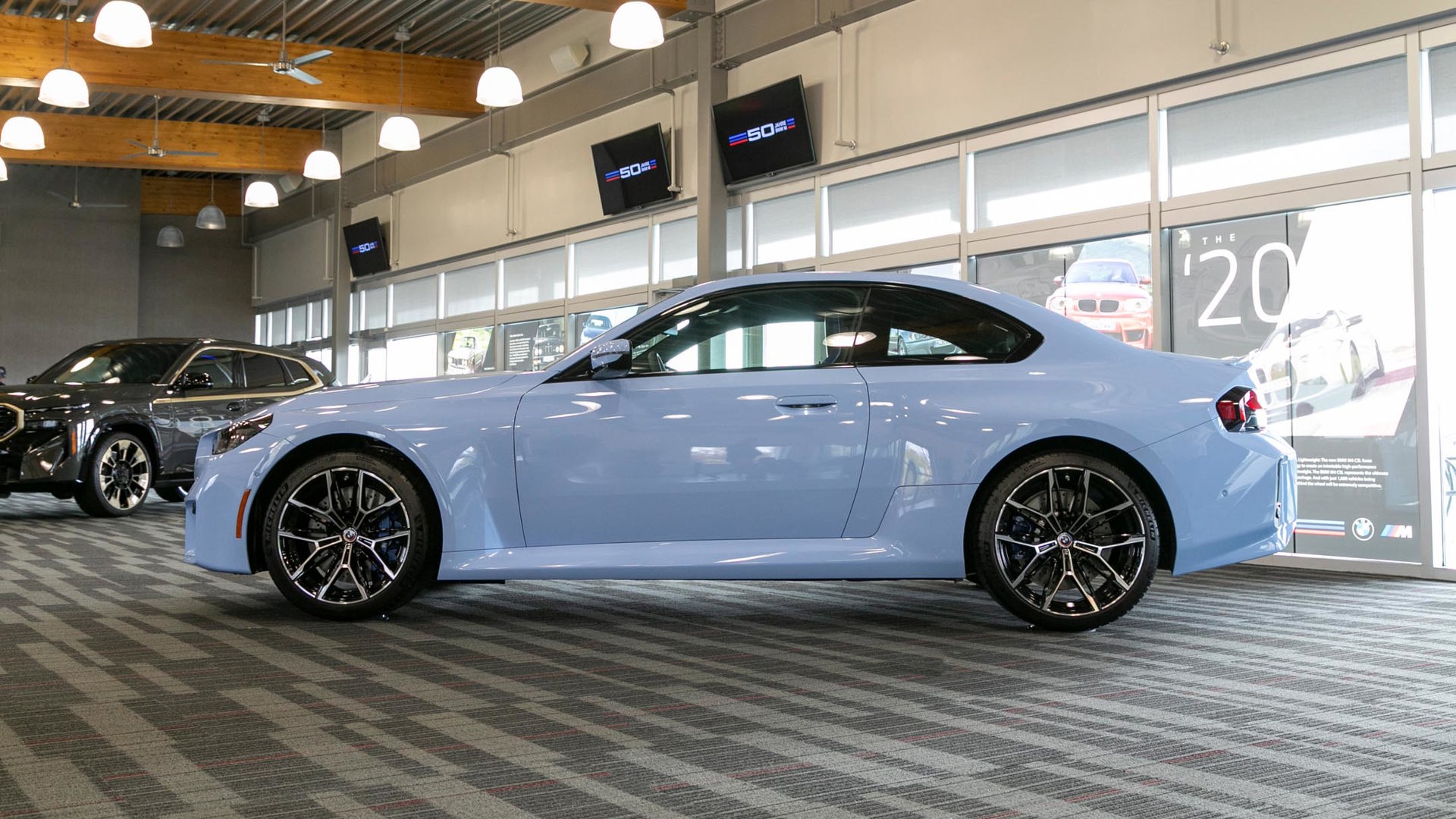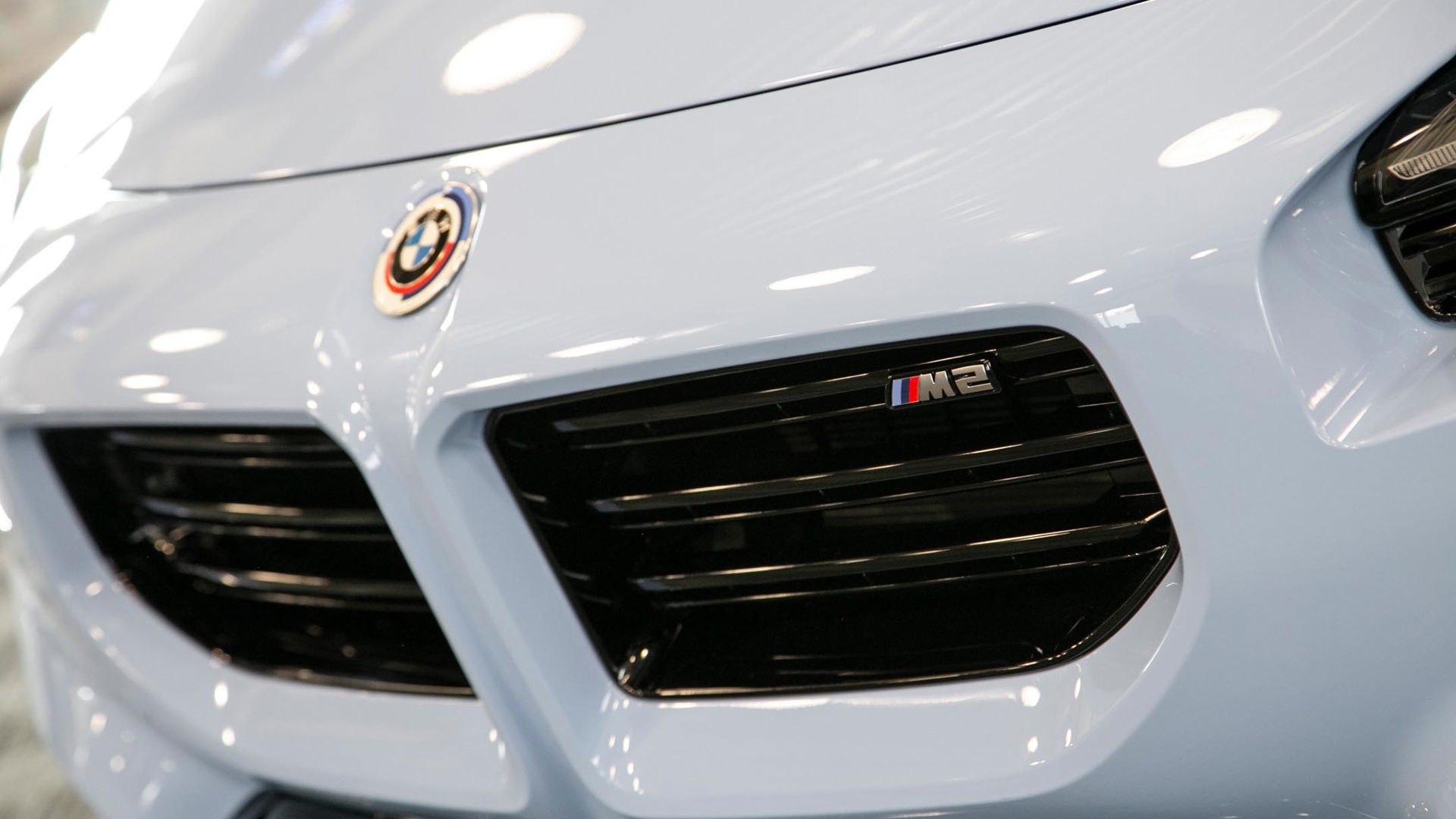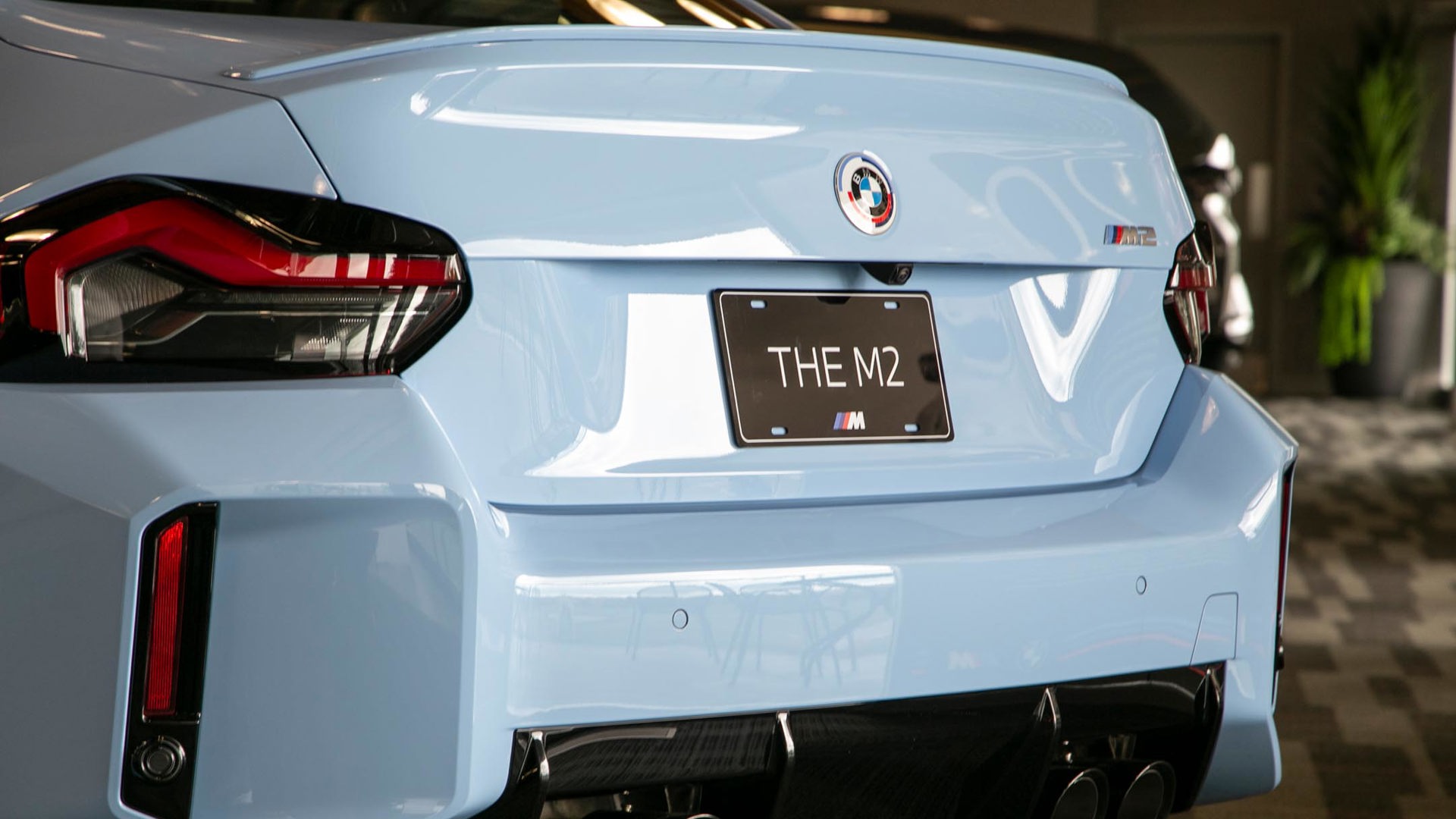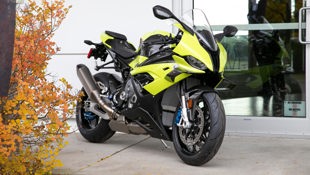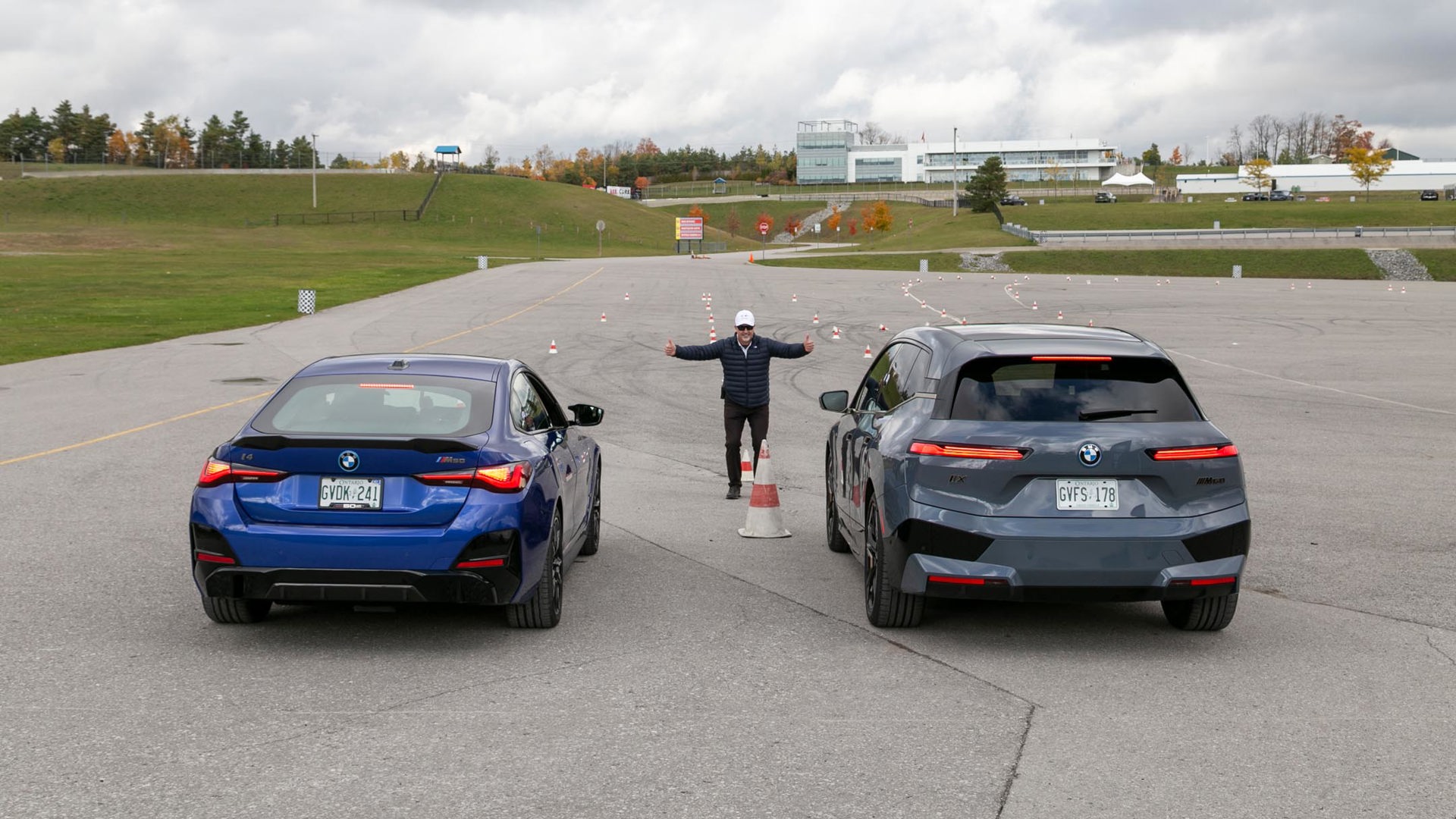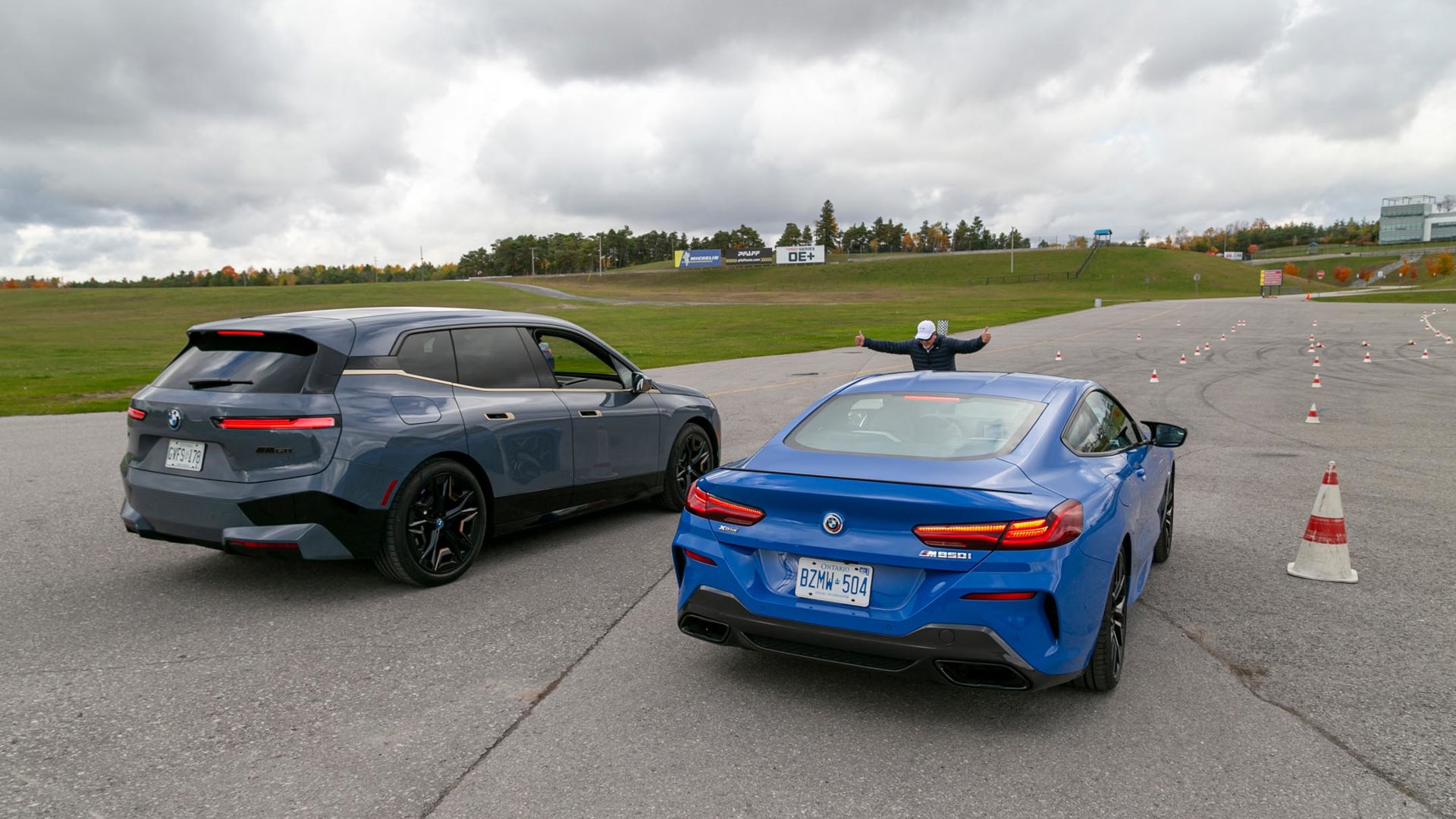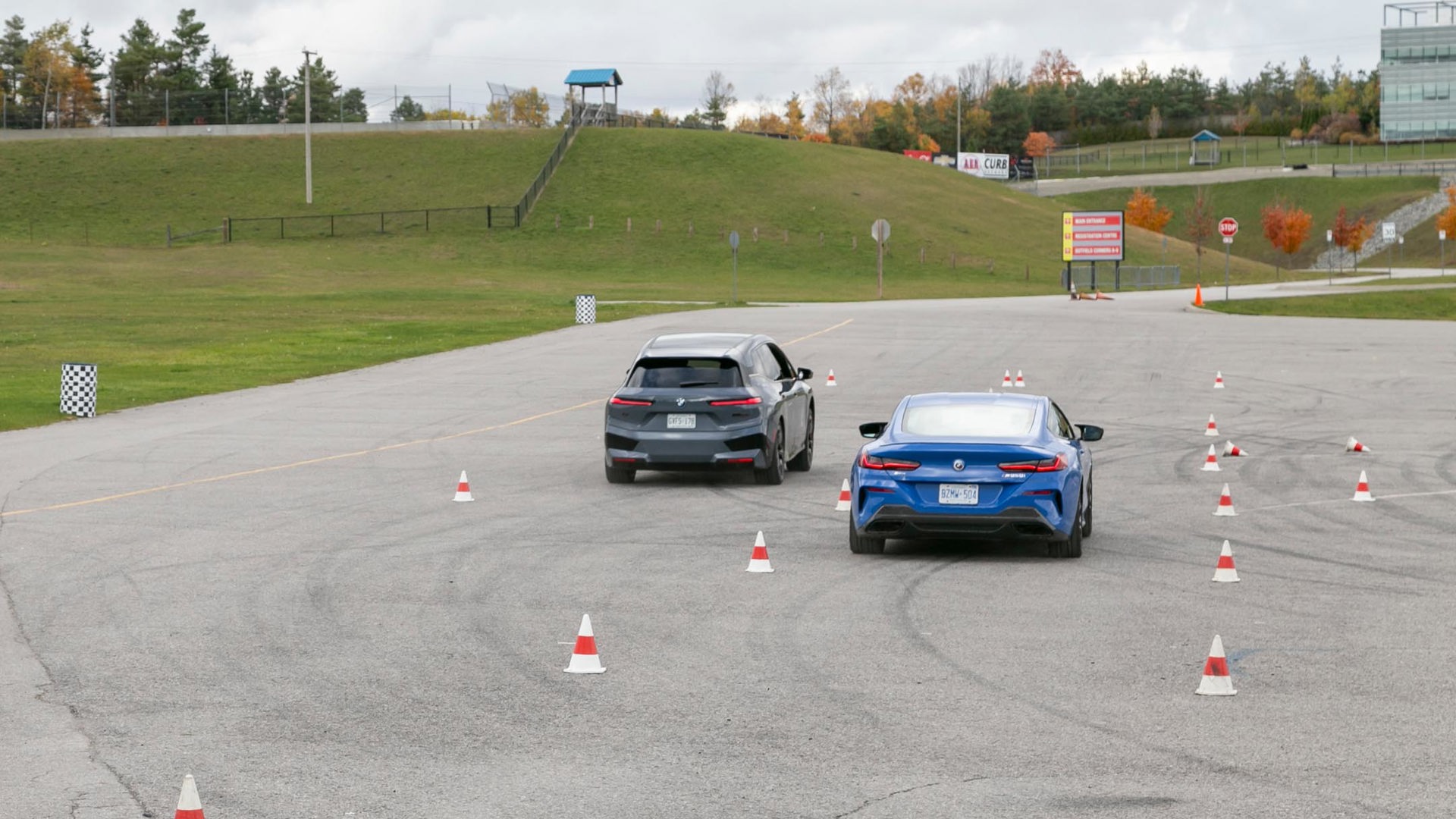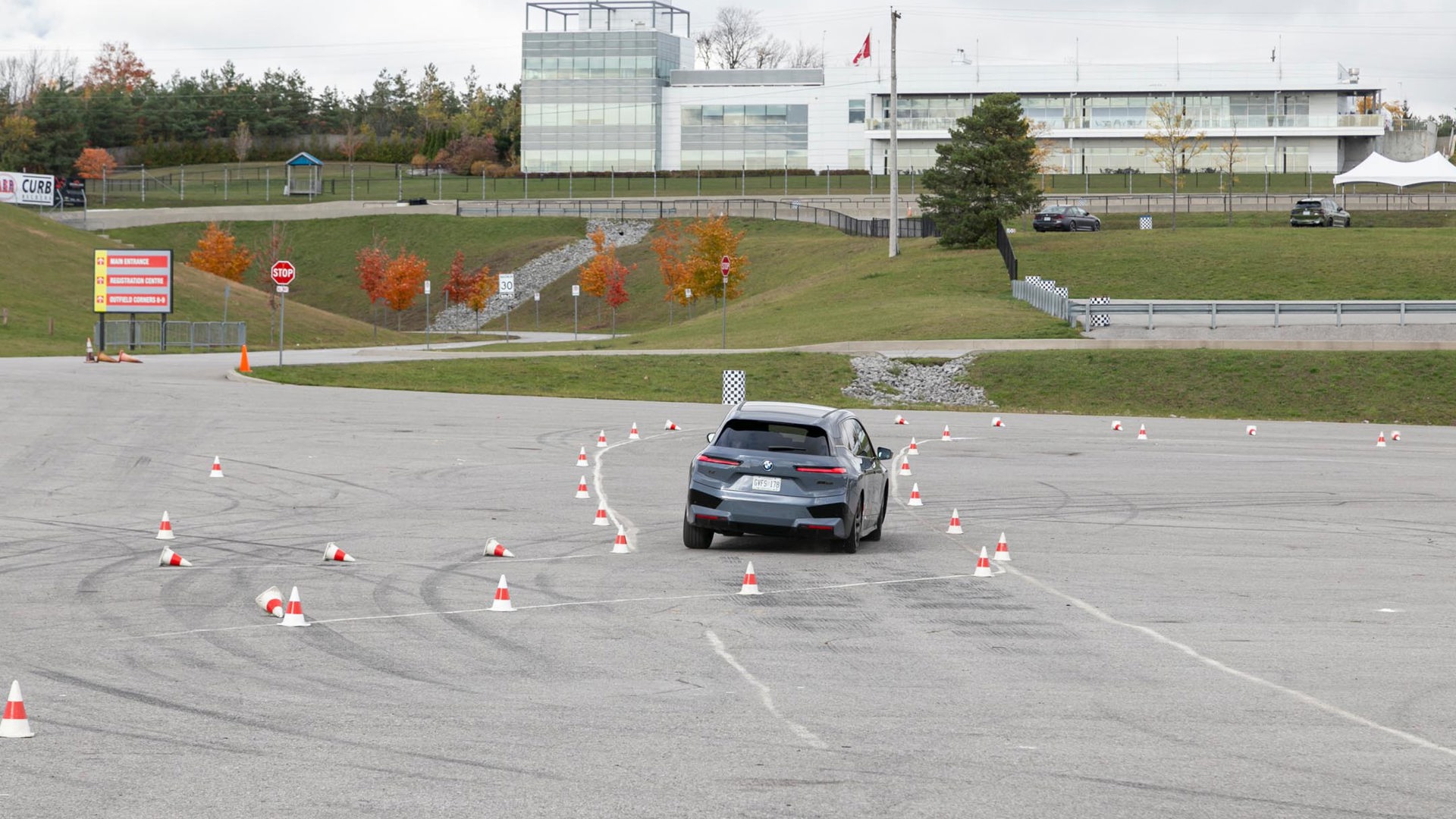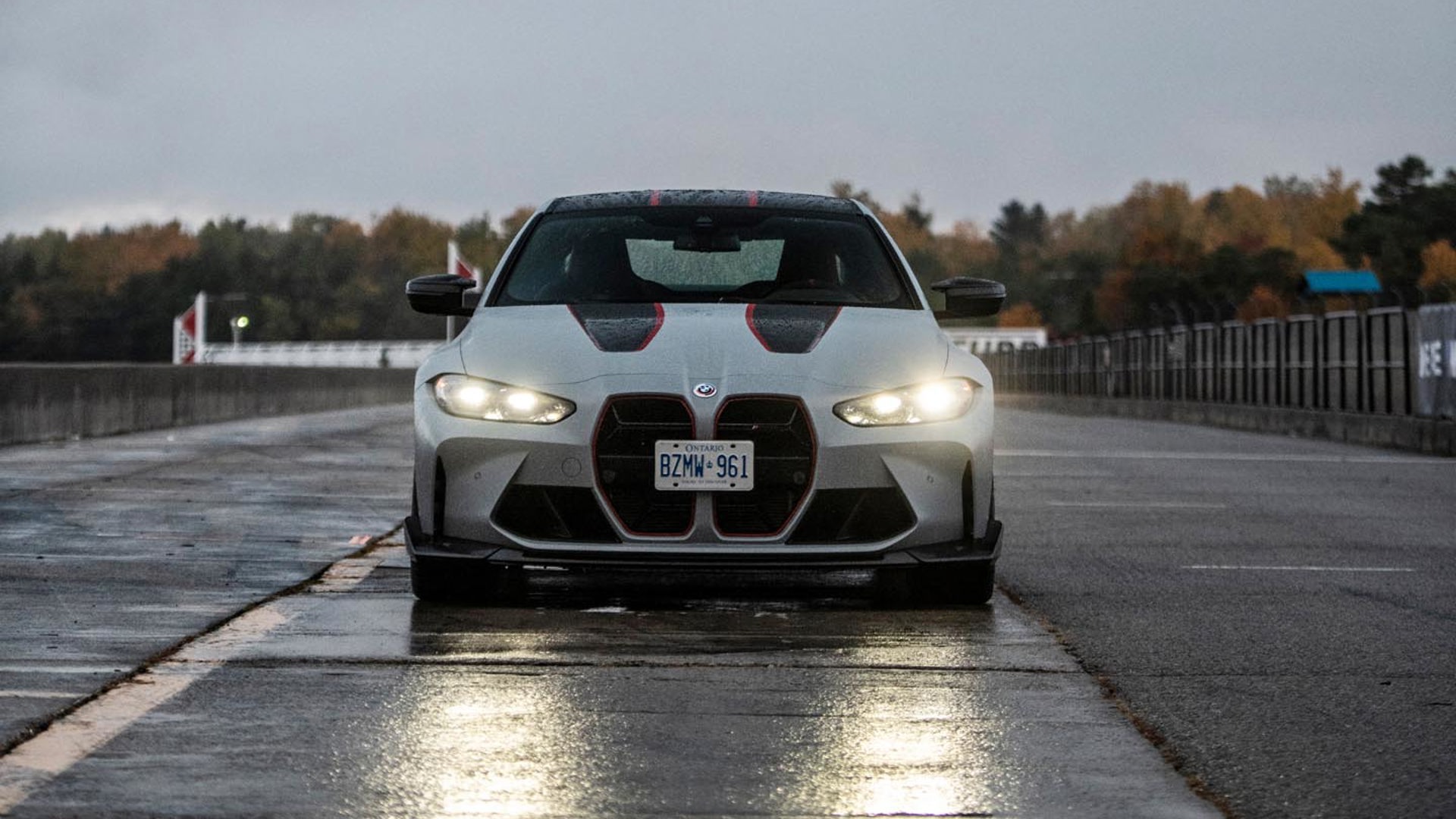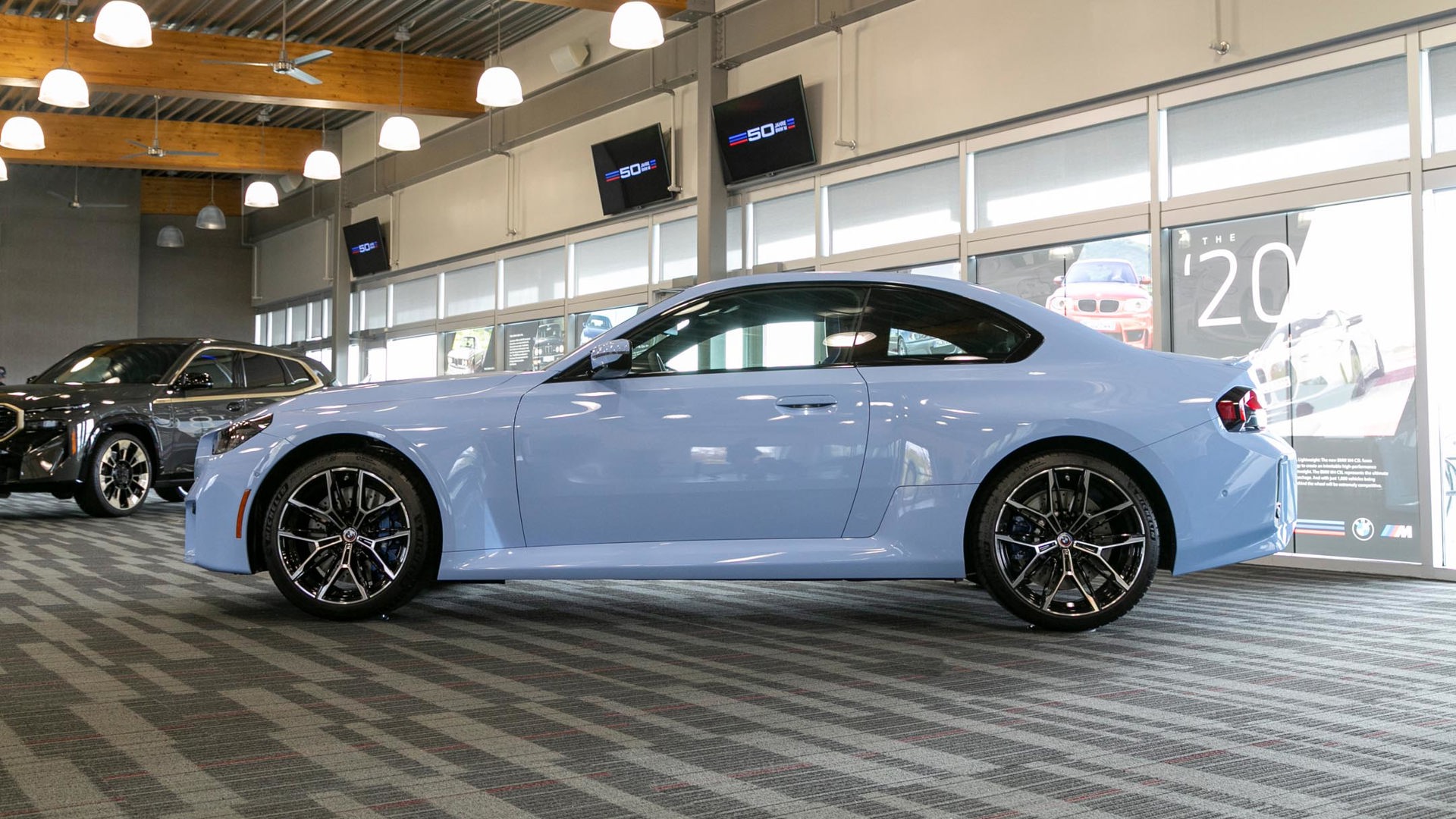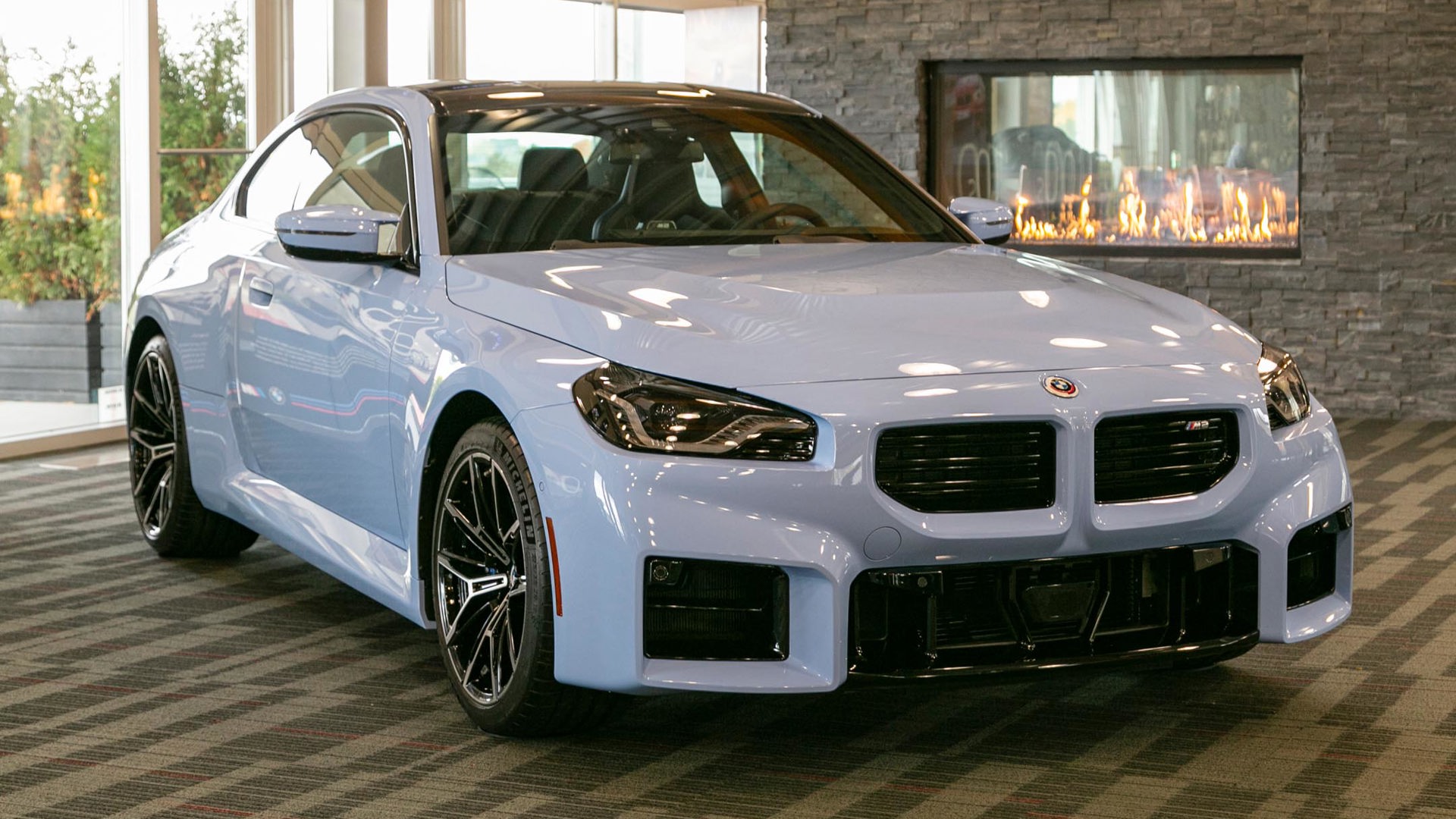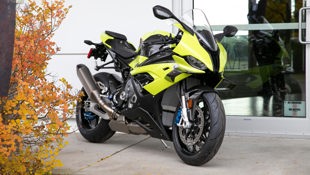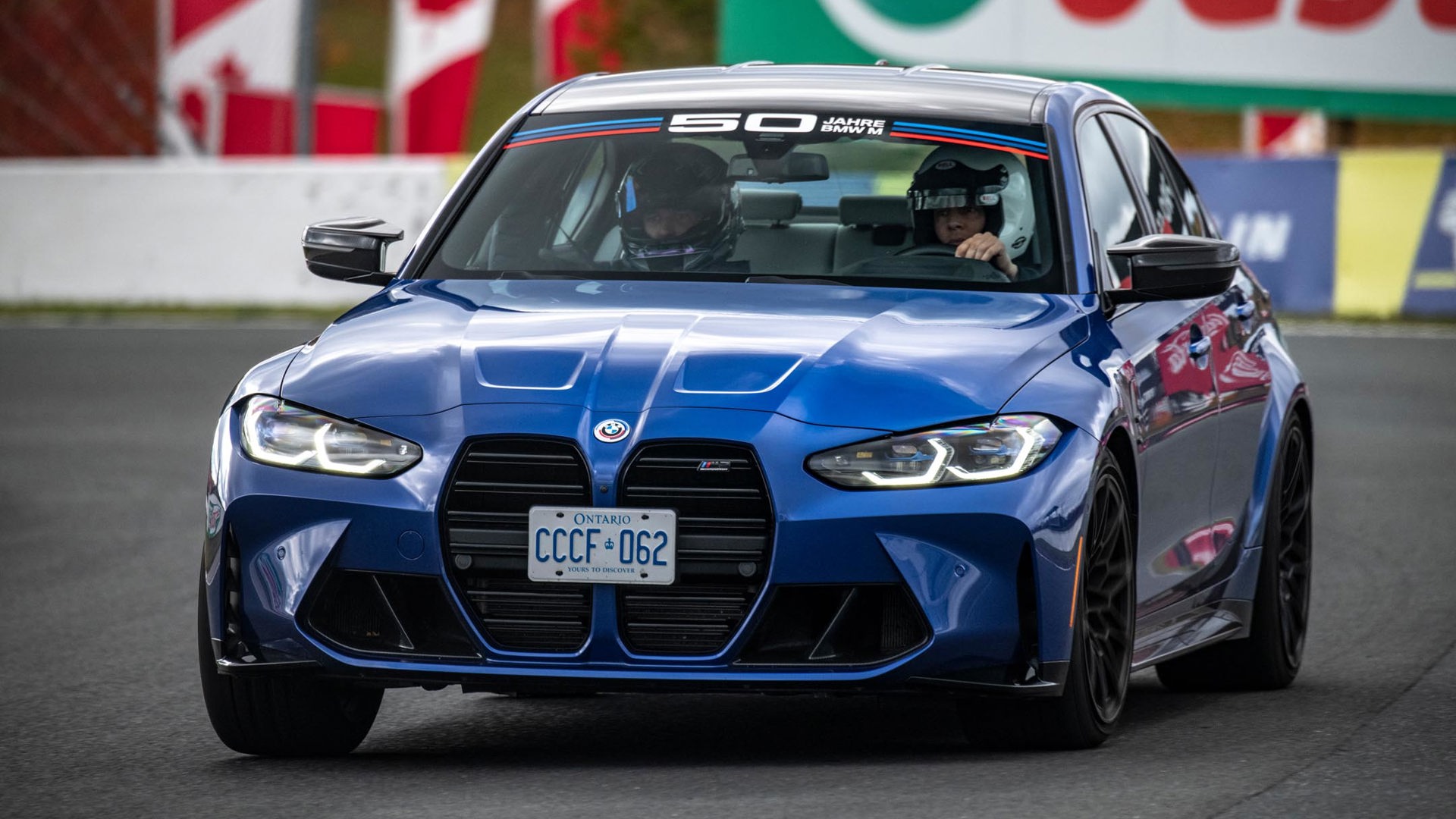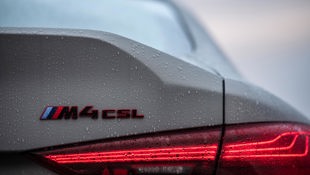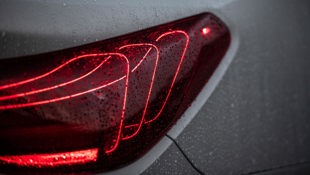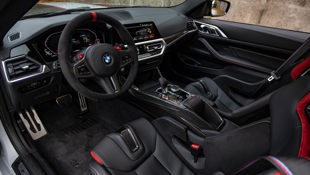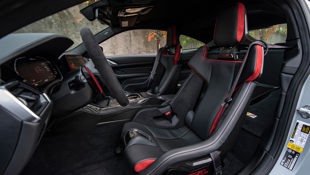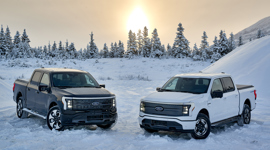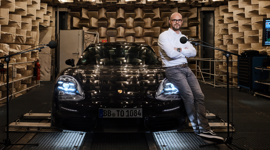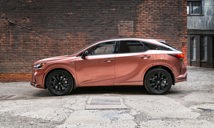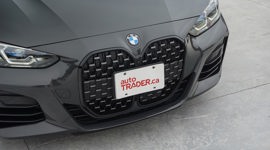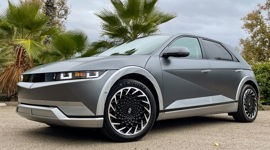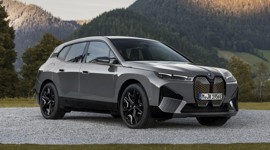With the X3 M’s suspension compressed and its Michelins at their limit, the bump presented itself mid-way through the high-speed turn two on Canadian Tire Motorsports Park’s Grand Prix Track, just as I dialled in a bit more steering input. Suddenly the nose of the bright Sao Paulo Yellow SUV was facing the east wall, then the west wall, amidst what seemed to be an awkward, howling, slow-motion dance, before coming to a stop.
I don’t recall gasping in surprise, a warm hit of endorphins, or even an elevated heart rate during and immediately after that split-second ordeal, but only gratitude to a higher power that I didn’t need to beg forgiveness of BMW’s team for balling up their six-figure car. I did, however, look shamefully at the professional race driver in the passenger seat, expecting admonishment for my obvious error, but with a grin, he simply said, “Nice save,” followed a short while after with, “Now you know the limits.” And off we drove to complete the lap.
The X3 M shrugged off the non-incident just as easily, and by the Andretti straight a few turns later, we were easily accelerating past 200 km/h once more. Track-ready SUVs seem like such a silly, compromised thing, and yet this vivid yellow beast unquestionably verifies the viability of tall wagons in a track setting when the performance-mad scientists at BMW’s M division get a hold of them. Just days before, at a different race track, I observed an X5 M Competition leaving a pair of e46 M3s in its dust at a BMW Club track day, disproving my previous belief that BMW’s M SUVs were simply for show-offs and that nobody would ever actually track them.
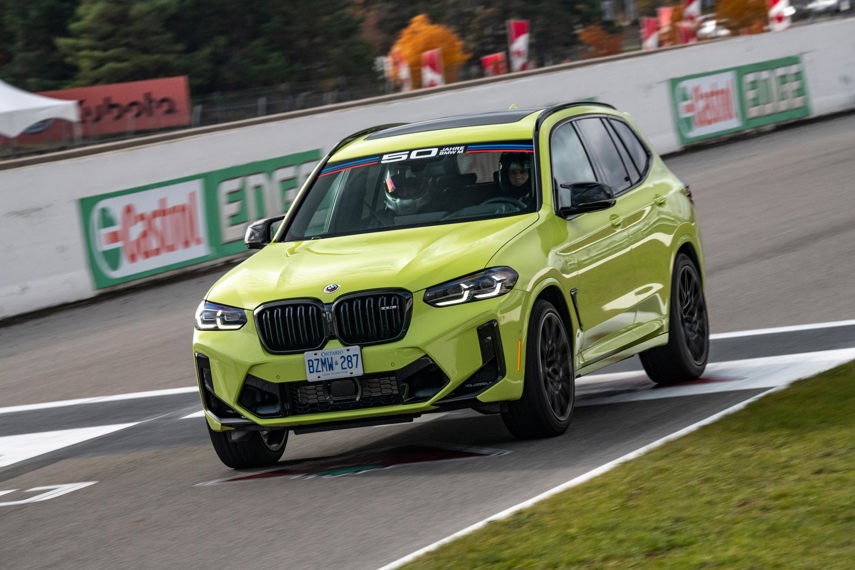
A Brief History
Fifty years ago, nobody would’ve imagined lifted family wagons capable of zero-to-100 km/h times of less than four seconds. By the late 1960s, following increasing success in racing, two key names in the European Touring Car Championship – Alpina and Schnitzer (both names that continue to resonate with BMW fans) – increased pressure on BMW for more competitive, lightweight versions of the beautiful 3.0 CS coupe. BMW Motorsport GmbH was formed with its first output being the lightweight homologated 3.0 CSL and a few years later, became the legendary 3.2 CSL “Batmobile” named for its outlandish spoilers.
In the early 1970s, as popularity grew for high performance sports cars, discussions began between the Bavarian carmaker and a few key Italian companies to create a glamourous halo product for BMW. Just before the opening of the 1972 Summer Olympics, the BMW Turbo concept was unveiled, a true exotic that showcased both state-of-the-art design and technology, like radar sensors for rear collision avoidance. While never reaching production, many of the BMW Turbo’s design cues were adopted by Italdesign for BMW Motorsports’ first car not based on an existing production machine: the M1.
Giugiaro’s low, sleek M1 supercar design has proven to be less ostentatious and far more timeless than some of the other exotic designs of the era. Much more than a styling exercise, the M1 was created as a competition car for Group 4 and Group 5 racing series with the catch that a minimum of 400 identical road-going cars must be built and sold to compete. Unfortunately, the deal with Lamborghini to produce the cars for BMW fell flat – along with hopes of reaching the necessary production run – as the Italian company fought bankruptcy. Instead, BMW took production upon itself for both the road cars and full-on race cars, the latter entered into its own single-make Procar series that followed the Formula One travelling circus and pitted private drivers against the five fastest qualifying F1 drivers at each stop.
All told, BMW produced 399 road-going M1s, but its sensational 3.5-litre inline-six engine would live on, updated for the M5 sedan introduced in the mid-1980s. And while the inline-six would become the most prevalent engine format for M cars, the division has offered everything from inline-fours, to V8s, V10s, and even a V12 in the 1990 M8, a variation of which powered the McLaren F1 supercar and won Le Mans.
Evolution, Expansion, and Leveraging the M
Originally, BMW M was focused on racing and the creation of driver-centric coupes, sedans, and roadsters, and motivated by the old adage Race on Sunday, Sell on Monday. While a competitive spirit may have been one of the key driving factors for BMW Motorsport, the M brand has always bolstered BMW’s reputation of building enthusiast-oriented driving machines. By 1980, BMW had added an M to the 535i sedan’s badge and, soon after, to the 635CSI’s badge, too, pre-dating the full-on M5 and M6 models to come.
As time went on and the company leveraged the marketing clout of the M badge, adding it to more and more models, some enthusiasts began to call out the marque for selling out, especially when the coveted M first appeared on the X5 SUV more than a dozen years ago. For years, BMW allegedly refused to make an M version of the 7 Series sedan since it was considered too large and heavy to be worthy of it, yet with the X5 M, here was a tall, heavy, all-wheel drive sport utility vehicle getting the full M treatment and not just an M Sport logo.
Purists further decried the move to torquier, turbocharged engines replacing many of the free-revving naturally aspirated mills, and the increasing frequency with which M badges were appearing on nearly every model BMW put out. While M Sport badges have been applied as part of styling packages, the true M models have always represented elevated performance and driver engagement, and that does indeed apply to the SUVs, too.

Today’s M
By 2018, the division that started with 35 employees in 1972 had crested the 100,000-units-per-year threshold. Today, more than a quarter of all the models BMW Canada sells wear an M badge. This is partly due to a curious fascination with high-performance BMWs in the Great White North, but it’s also the result of many more models wearing the coveted M badge than ever before.
During a celebration of 50 Years of M at Canadian Tire Motorsports Park, two new models were unveiled to the Canadian media: the new M2 and the XM. The former is a Mexican-built, compact coupe with a 453-hp turbocharged inline-six and with an available six-speed manual gearbox that will serve as not only the smallest and most affordable true M car in the lineup, but also arguably the purest version of an M car in its historical sense.
The XM, meanwhile, is the first electrified full M machine and represents just how far the brand has ventured from racing homologated cars to a mid-sized, plug-in hybrid SUV. Combined, the electric motor and 4.4L V8 present a 644 hp and 590 lb-ft of torque and distribute the power through an all-wheel drive system. A later Label Red version will have 735 hp and 735 lb-ft of torque. While the SUV format is indicative of current consumer tastes, the M Hybrid drivetrain will be campaigned in the IMSA WeatherTech Sports Car Championship series in 2023, and the 24 Hours of Le Mans.
BMW has even started applying the M to the highest-performing offerings in its motorcycle division, including the newly introduced M 1000 RR and M 1000 R.
As if to make a point of electrification’s role in M going forward, BMW had both an i4 M50 and iX M60 on hand for drag racing and an autocross competition. Pitted against an M850i, a car claimed to do an easy zero-to-100-km run in about 3.5 seconds, the iX could handily beat it as long as the driver wasn’t asleep at the switch. During the autocross, the electric SUV again bested the big 8 Series coupe and an M340i, falling behind only the swift and compact M240i.
Behind the Wheel
Over at the big track, a handful of M cars were provided for us to lap, including the aforementioned X3 M Competition, M4 Competition, M3 Competition, and the sportiest machine in the lineup today, the M4 CSL.
With similar specification, the M3 and M4 Competition models showcased the brand’s ability to make mid-size coupes and sedans that balance incredible performance with genuine usability by drivers who don’t possess a full FIA race licence (and even better performance by those who do). These cars can snap off lap times that would embarrass full-spec race cars from the early days of M, and then drive comfortably across the city to pick up a dinner date. That said, buyers planning to do more of the latter should probably skip the constrictive carbon bucket seat option.
As accomplished as the M3 and M4 Comp are, the M4 CSL presents a pure driving experience that exists in very few street-legal machines these days. Not unlike the 3.0 CSL from BMW M’s early days, this new CSL is a very limited-production machine with only 41 of the 1,000 units set to come to Canada. It wears more flamboyant bodywork than other M4s, and with CSL standing for “Competition, Sport, Lightweight,” it’s only fitting that this new car sees a weight reduction of 108 kg to a curb weight of 1,615 kg. The weight loss program comes from the jettisoned rear seats, along with much of the sound insulation, plus the use of carbon front seats, a titanium muffler, forged wheels, and M Carbon ceramic brakes, among other detail changes. There’s a bump in power for the CSL too, up 40 to 543 hp and the suspension has been dialled in to maximize handling.
The collection of improvements to the rear-drive CSL over the M4 Competition have resulted in a Nürburgring Nordschleife lap time of 7:20.2, making it the fastest series-production BMW of all time.
The numbers are one thing, but they do nothing to describe the purity of driving experience enjoyed from behind the wheel. The steering is quick but incredibly precise, communicating the minutiae of the paved surface better than anything I can recall driving in recent years, helping even mediocre drivers like yours truly feel wholly connected to this machine, and urging me to comfortably tackle corners quicker and quicker. The brakes are phenomenal, allowing those cold-sweat moments when coming at a tight corner much quicker than anticipated to be shrugged off with ease.
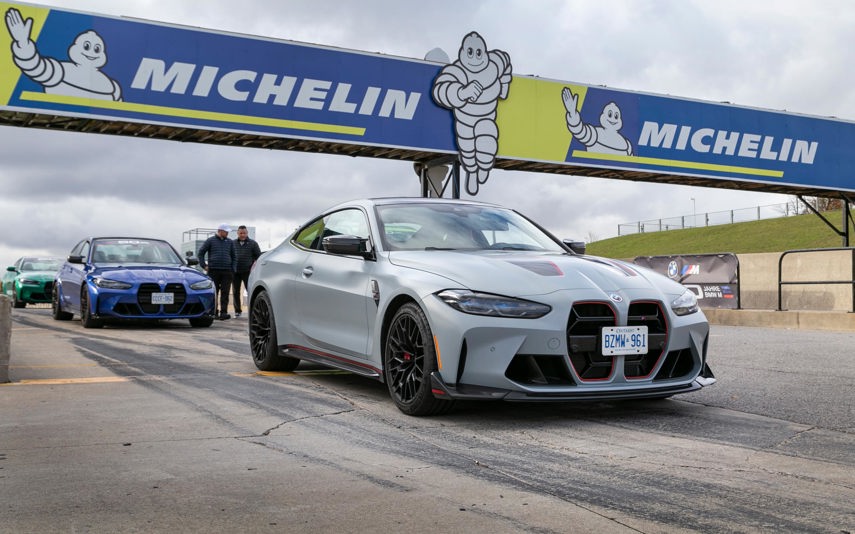
Forty additional horsepower is nothing to sneeze at, and combined with the mass reduction of the CSL, it might as well be double the power, but with the M4 Competition already feeling plenty quick, the difference between the two in this regard isn’t as great as expected. But, the volume of the CSL’s sonorous wail sets neck hairs on end in a way that the more subdued M4 simply cannot. The M4 CSL is in a very rarefied group of new cars that are lightly disguised race machines despite their road-worthy certification, and the exhilaration provided makes it worth every penny of its $166,500 cost of entry.
The M division has evolved and grown to become the extremely important part of BMW’s business that it is today. While not all the products on offer align with BMW Motorsport’s original vision of competition-ready machines with pure driver engagement, there’s no doubt the M badge is affixed to a series of impressive high-performance machines. The fact that an SUV like the X3 M can legitimately pull off lap after lap on the track at the hands of ham-fisted automotive journalists pretending to be DTM racers shows just how seriously the folks at BMW take the M badge. And for the die-hard purists, rest assured that with offerings like the M2 and M4 CSL, the principles that defined M all those years ago are still revered and upheld by the brand today.
